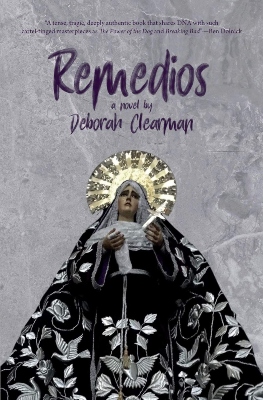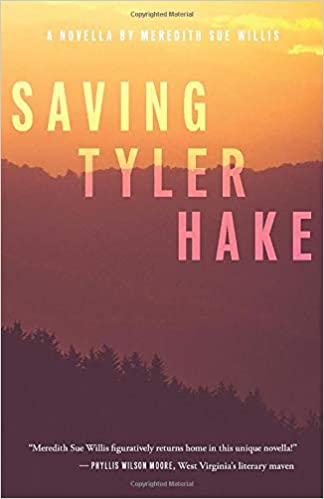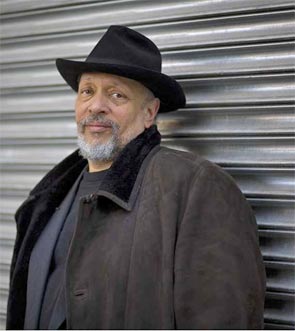Meredith Sue Willis's
Books for Readers # 206-210
February 12, 2020
Read this newsletter online in its permanent location Back Issues
MSW Home About Meredith Sue Willis Contact
Review of MSW's Their Houses in Southern Literary Review!
Marc Harshman suggests this poem by Barbara Crooker for when we are feeling low because of politics.
Looking for a high quality writing class in New York City? Try NYU's School of Professional Studies Writing classes--see catalog here.
Books for Readers # 206
In This Issue:
New Books, Announcements, and Events
Shorter Reviews
Notes on Recycling Fiction from Ed Davis
Good Reading Online
Announcements
Anthologies of Appalachian Writing
Irene Weinberger Books
Book Reviews:
Book Reviews, if not otherwise credited, are by MSW.
Little Women by Louisa May Alcott
The Silence of the Girls by Pat Barker
Urban Narratives by Ken Champion
reviewed by Sarah Katharina KayssFelix Holt by George Eliot
The Autobiography of Miss Jane Pittman by Ernest J. Gaines
Gone, Baby, Gone by Dennis Lehane
Fuzz by Ed McBain
Becoming by Michelle Obama
A Question of Upbringing by Anthony Powell
The Overstory by Richard Powers
Goshen Road by Bonnie Proudfoot
Link to review of The Dead and the Living by Hugh Seidman
reviewed by Burt KimmelmanBlood Lands: Europe Between Hitler and Stalin by Timothy Snyder
Women Talking by Miriam Toews
The Nickel Boys by Colson Whitehead
The Power of the Dog by Don Winslow
Everyday Chaos by David Weinberger
I like to be reading several books at a time. Sometimes I'm too tired to face a book with challenging ideas, so I read a calm procedural like Donna Leon's hymns to Venice via her laid-back and reflective Commisario Guido Brunetti. Sometimes I want to learn something about a subject or a person--I'm reading a book about Louisa May Alcott now, and I have ready-to-go one about Fruitlands, the utopian project where she lived with her Transcendentalist father Bronson Alcott and the rest of the family.
Last month I was flipping back and forth between two books of breathtaking distance from one another. The first was the wildly popular and best-selling....
Becoming by Michelle Obama
The book was engrossing and well done on so many levels, but I have to say I probably loved the carefully written narrative of being a first family less than the story of Obama's growing up in a very middle class family on the South Side of Chicago. It was a family much like my own, and a family that made it easy for her to identify with the middle and working class families she met on the campaign trail in Iowa in 2008 and elsewhere. Her schooling, and her early work years, and her insight into the difference between achievement and money and doing work that is spiritually satisfying is all solid and reassuring.
The book is, in fact, reassuring on many levels. The structure is strong and highly polished with carefully laid in details that foreshadow coming events (I'm thinking of how she prepares and then tells of the assassination of Osama bin Laden from her point of view). She is also candid in her emphasis on her "village" throughout this book. That is, as first lady, as elementary school student with a bad teacher, she was never alone. She writes about the importance of her women friends, about her mentors, her mentees, and her large staff throughout her public career, including the team that helped with this memoir.
Plenty of public figures and authors give shout-outs to the people who supported them along the way, but Michelle Obama describes in detail and with respect the staff at the White House and a myriad of others who she sees not merely as support but as co-creators of her work and indeed who she is. This quality alone is worth reading the book: Americans are far too seduced by the ideology of the Lonely Hero. Obama speaks of herself as someone who doesn't like to be or work alone. How closely she feels herself woven into the groups around her is one of the most instructive things here.
She also presents in powerful detail what it is like to be a successful African-American in America–both the ordinariness of it--all the normal human fears and failures and sadnesses-- but also high accomplishment and pride--and the special challenges of being looked at as a representative of a race.
This is readable, instructive, and uplifting in all the best meanings of that word.
And I was so thankful to have it to turn to after reading a few chapters of.....
Blood Lands: Europe Between Hitler and Stalin by Timothy Snyder
This history is about the part of Europe where fourteen million or so people were murdered between 1932 and 1945. This does not, by the way, count those hundreds of thousands who died in battle. One of Snyder's important points is that the reason we know as much as we do about the horrors of Auschwitz is that
Auschwitz was not only a death camp but also a work camp, and there were survivors. To hear personal stories, you have to have survivors, and few survived the murders in the Blood Lands.
Some Germans can make a case for not knowing what happened because only a tiny per centage of Nazi murders took place in Germany. Mostly the Nazis shipped those they believed to be "subhumans" to the Blood Lands for death.
Millions there were also killed by Stalin's consciously planned famines before the Second World War; more millions were simply shot in the head as they knelt by burial pits. These were Jews but also Poles and Ukrainians and many, many others.
One of the book's great strengths is that it makes horrible sense of how easily ordinary people--people like ourselves-- can join the killers in order to survive. We also learn to convert abstract ideals into mass murder. In Stalin's case, there was an abstraction of a greater good for the greatest number that turned into starving millions to death. Hitler had a ideology of a superior race ruling in glory over subhuman slaves.
Nor was it simply good guys versus bad guys. Politics became twisted and deadly: Lithuanians joined the Nazis to shoot hundreds then thousands then millions of the "subhumans" because they hated the Russians Brave partisans killed Jews after they fought the Nazis.
In prisoner of war and other concentration camps, people with a strong urge to survive ate corpses--and sometimes created a supply of corpses to eat. The appalling pervasiveness of all this is almost beyond understanding. The sheer numbers of murderers as well as the murdered should bring it home that it could be us and our friends and family.
Snyder handles all this brilliantly, but his book did not elicit despair in me. For one thing, it carefully distinguishes things: Hitler's vision, he writes, had an aesthetic basis (all those beautiful blond Aryans) and was insane. Stalin's vision in the beginning was rationality pushed to a horrible extreme (too many Ukrainian peasants? Starve 'em. Too time consuming? Then shoot 'em).
But the enormity of what happened in Poland and Ukraine and the Baltic States is clearly one of the things that human beings--a lot of us-- have proved capable of. It's looking less and less likely that we can put the brakes on the worst impulses of our species, but it isn't impossible. There are hopeful signs: slavery has been largely eliminated; many countries have at least an idea of caring for each other as family beyond the blood family. There will always be serial killers among us, but we can be better than our worst. Political systems can help, when they aren't being used to make us worse. Religion at its best can help. Individuals can make a difference, but it's important to recognize that there's no single thing that an stop the next Blood Lands, but many things.
Occasionally, Snyder refers obliquely to other atrocities in history: Hitler, for example, admired the United States for push through for lebensraum to the Pacific ocean, getting rid of native subhumans as it went. He considered that a model for Germany.
We have to think about that. We have to think about our high principles: was Stalin better or worse than Hitler for having a vague idea of making the world a better place for the majority? And how about those American blankets infected with small pox to clear away natives? How about buying people from Africa and stacking them chained on ships and tossing over the dead ones every morning?
How many are going to die from climate change as the side effects of untrammeled profit seeking? But, of course, comparing victims goes nowhere. What matters is knowing that we are all capable of both the worse and the best.
But, oh my, how horrific the worst is.
Goshen Road by Bonnie Proudfoot
Bonnie Proudfoot writes very beautifully–her mountains and animals and plants have the same vigor as the people in this a set of closely woven stories that create if not a conventional novel, then something just as good: a vision of mountain life from the late sixties through nearly the present among people who choose to live in the hollows and high fields of Appalachia.
One young man named Lux is dedicated to homesteading, wanting just his girl and his strong back to make a
place to live. This is long time American individualism and pride, and Lux's failure seems noble. Yet, subsistence farming isn't really a twenty-first century option. Everyone needs another job–logging in Lux's case.
What's remarkable to me about this book is that Proudfoot does not bewail the fate of people whose chosen lifestyle isn't working out. Nor does she bewail the bright girls who get pregnant and drop out of high school. She walks a narrow line in portraying the richness of this way of life without romanticizing it. People are unfaithful to one another, they have babies probably too soon. They often have narrow views, and they don't live up to their own ideals. She recognizes them as intelligent and creative and determined. And recognizes the pain of their collapsed dreams.
Some of the stories stand alone quite nicely, like the story of Billie's brief infatuation with a drifter/dope dealer/carny that ends in jail but is delightfully rollicking throughout. The long piece about Barker Mountain and how the dream of subsistence farming at the end of Goshen Road is probably the heart of the book, about struggle and dreams and love. It is also about the good people (Lux and Dessie and their family) versus some real losers, Wayne Barker and his road-destroying gang of drinking buddies. The destruction of the road becomes the focus of the story, and ultimately perhaps the whole book,
The final chapter has a nice description of change in one of the main characters. We've seen Dessie go from a passionate, competent girl and young woman through serious vicissitudes with her troubled but spiritually powerful husband. When he dies, she goes through a depression that leads her to spend half the insurance money on televangelists Tammy Faye Bakker and Oral Roberts, but she finally begins to find some new directions, repairing the home place, taking on babies to care for and a troubled older girl.
It's not everything you'd want for a wonderful character like Dessie, but it's a lot.
Everyday Chaos: Technology, Complexity, and How We're Thriving in a New World of Possibility by David WeinbergerThis David Weinberger book brings us up to date on his thinking. Weinberger has been a prophet for the value of the Internet for decades, and in this book he confesses that it isn't all good--that the voices of the 'Net haven't changed the world in the way he imagined they might. Commerce got the jump on us.
Still, his explorations of machine learning suggest a new, realistic kind of optimism. It forces us to face uncertainty, to accept that we know very little, and to feel awe. Bravo for his honesty and continued reading of the future and thinking about our present. He offers a whole world view, about getting older as well as confronting the vastness of computer generated learning and the use of vast conglomerations of data.
Leigh Buchannon in Inc. Magazine says, "Weinberger, for decades one of the most prescient and philosophical thinkers about the internet, here tackles the broader subject of how technology influences the way we understand and function in the world. Moving back and forth between ancient history and 10 minutes from now, Everyday Chaos explains that fixed-future ideas like progress and preparation are insufficient in the face of multiplying layers of complexity. Yet as our decision-making is overtaken by machines, it becomes possible to operate without our own hypotheses about what will work. Weinberger advocates for operating in a state of "unanticipation" in which we leave options open (think minimal viable products, agile development, and black swans). In this way of looking at the world, traditional strategy can be dangerous. Obscurity is your friend."
For the whole article, click here.)
The Silence of the Girls by Pat BarkerPat Barker is always worth reading, very solid, very Britishly confident of her competent prose and her story telling. This one is a spin-off/revision of The Iliad mostly from the point of view of Briseis. In it, as in her wonderful World War I trilogy, she explores war from the underside and unheroic.
To my taste, Barker is, oddly, least successful here in her protagonist's parts of the book. By giving Briseis a first person voice, Barker ends up with a woman who sounds thoroughly contemporary in her sense of self and desire for personal agency. Obviously you write a novel about the Trojan War to imagine and connect to the lives and experience of the voiceless– the women, especially the enslaved women– but by giving Briseis such a modern sense of self, the past seems to be lost.
Amazingly to me, she actually does a better job of that imagine-and-connect with Achilles himself. She uses short third-person-limited passages for him, and manages to make him interesting and concrete while retaining the mythological mystery.
There is no mystery about Briseis, and I have to assume Barker doesn't want there to be. Briseis is one of us transported back in time. The big gap for me is that while Barker imagines what it would have been like to be a slave in a soldiers' camp, she doesn't give us much of what it was like for the women when they were "free." Briseis actually seems to have more physical freedom in the camp of the Greeks.
As a writer, I wondered how she might have made Briseis more 8th c. BCE. She might have used third person limited, as she did with Achilles. Might Briseis have had some some interactions with the gods and goddesses? That's certainly in the Iliad. Part of what makes Achilles work as a character is his relationship with his goddess mother, who shows up out of the sea occasionally, always mourning him in advance! He yearns for her and is annoyed by her--very much Homer, and she's a real Greek goddess and a real mom.
Anyhow, this book gets better as it goes on, and, as I said, Barker is always worth reading.
For a review that accepts the feminism and explains some of the background, see The Guardian.
The Overstory by Richard Powers
I had trouble finishing The Overstory. It has been very popular, and it certainly has some beautiful passages and some strong action scenes. It also teaches some interesting things about the lives of trees. I definitely got the idea that trees are important and have mysteries that human beings haven't begun to address let alone understand.
But I felt so flattened by the constant preaching, and so weary of the repetitions. The review in the Guardian points out that there are multiple references to how some redwoods are older than Christianity. Oh, and I, like some other readers, had trouble distinguishing among the human characters, as in remembering which faithful friend/boyfriend was which.
I do admire the novel's ambition-- the very bigness of Powers's conception. Also, I could not agree more about the bleak picture of what we are doing to the soil and the old forests.
Powers manages a pretty good story line out of his material, but the politics seems constructed from slogans and superficial research (the Occupy Wall Street part, for example, is the merest sketch).
And he definitely romanticizes the trees. It occurs to me that he has made the trees (created in his novel as a collective, or perhaps a kind of planetary Oversoul). It is as if they were in all ways the opposite of human beings: giving, wise, welcoming, etc. And it should be noted that the trees are big plants, maybe the biggest, so easy to identify with. We all have a beloved tree. Shel Silverstein wrote The Giving Tree and then there was Dr. Seuss's Lorax speaking for the trees. In other words, trees are relatively easy to identify with. What about fungi and one celled life forms?
Who speaks for the volvox?
And one more complaint: one of the possible hopeful directions at the end is Artificial Intelligence. AI is is gathering all knowledge everywhere and will perhaps find the right answers for us. A lot to question in this theory, which is, in the end, the argument that technology will save us. (For a more complex look at these issues, see David Weinberger's book reviewed above). And if you set that hope beside the romanticized plant counterpart of human beings, you have ideas that are no necessarily wrong, but seem a little thin to me.
Still, if on the other hand, a mere hundred of the people who read novel learn that the earth is valuable for itself not just for us to use, and maybe even sentient in some way we can't fathom-- then it's a worthwhile book.
SHORTER REVIEWS
The Autobiography of Miss Jane Pittman by Ernest J. Gaines
Mostly highly entertaining, and it does what is advertised, which is touching fictionally on a lot of history. Miss Jane Pittman's life goes from the end of slave times to the height of the high civil rights movement. There is
wonderful specificity about Gaines's Louisiana and its people, including Creoles who won't have anything to do with anyone else of color; the ever-present Cajuns; and the odd "Sicilian."
The black poor, even after emancipation, continue landless and dependent on "master," and there is also insight into the limits this puts on white people, especially the men, who are so addicted to their power they don't see what's happening around them.
Gaines is also very good at giving hints of dialect with words like "Luzana" for the state and "retrick" for rhetoric. Jane herself is feisty and smart, creating for herself a successful life through hard work, mutual support with others, and some good luck along with the bad.
Felix Holt by George Eliot
I reviewed Felix Holt a long time ago for The Ethical Culture Review of Books. This reading, I was still struck by the portrayals of the two main women, Mrs. Transome and Esther Lyon, but I was also interested in the overbearing Harold Transome and minor characters like Mr. Christian and Mr. Johnson and also Denner, the faithful servant to Mrs. Transome.
Probably the least interesting character is the eponymous Felix Holt himself. Eliot admires him, but also presents him as another version of Harold Transome--both of them cut off their mothers from their life's work. Felix does it as an act of righteousness--stopping Mrs. Holt from selling homemade medicines of doubtful scientific value. I usually found myself on Mrs. Holt's side. She is a talkative hoot, and another charming long-winded character is the "little" minister Mr. Lyon.
Eliot wrote this book just after Romola and just before Middlemarch. It will never be my favorite of her novels, but it has funny scenes and the revelation of a great secret. Mrs. Transome's suffering is brilliantly depicted, and there is also the interesting effort by Felix to turn the rioters away from hurting other people.
And finally, Esther's choice--her moral strength-- is the real happy ending.
The Nickel Boys by Colson Whitehead
This novel, based grimly too-close to real events at a now-closed reform school for boys in Florida, is vivid and has an interesting change at the end that didn't seem necessary to me. The events were plenty shocking on their own: no more stimulation needed. I wonder if it was a story that really needed to be fictionalized?
On the other hand, I was totally pulled into it, and fully understand the impulse of a serious novelist to get into such a story–the torture and murder of boys, with, in spite of brutal beatings for everyone, far worse treatment for the black kids.
The Power of the Dog by Don Winslow
So it appears Winslow does a lot of research, so there's a fair amount of accuracy in this, in part, but on the other hand, his characters are fictional, and he doesn't have all the facts up to date, but apparently the drug cartel bloodbath is real enough. I doubt I will read the second two books of this enormous trilogy, which is just too much for me. I did finish The Power of the Dog, though.
What I see here is history mixed with fiction and a lot of super macho game playing that skips, of course, almost all of women's experience except terror and sex. All normal work life is skipped.
If this exceedingly lukewarm review makes you want to read WInslow, get a more even-handed idea of the books from NPF and the Seattle Times:
https://www.npr.org/2019/03/03/698645059/the-border-is-shakespeare-for-our-times-seriously
Check out Burt Kimmelman's review of Hugh Seidman's The Dead and the Living.
Gone, Baby, Gone by Dennis Lehane
A typical Lehane. You've got to enjoy Boston and a lot of torture and gore. He takes his time, writes heart-wrenchingly of children in danger. This one is about a group of monster child molesters. Lehane really knows what to do with this repelling material. As long as you know that you're going to get lots of twisty, twisted violence, you'll get your moneys worth. Like much commercially successful genre fiction, Lehane repeats his themes and tricks, but, again, he fulfills his part of the bargain.
Fuzz by Ed McBain
I've been trying to educate myself a little over the past couple of years on genre novels. Lehane is always on list of crime writers, and so is Ed McBain. The writing in this one wasn't terrible, but after someone like Lehane, the story is so light the book practically flies into the air. It felt to me like a scenario for a network TV show with a few metaphors tossed in. It features various recurring characters, apparently already established in previous novels, and some murders of cardboard politico-types and a few henchmen and other supernumeraries. So it wasn't hard to read, but melted Ike a macaron.
One notable thing: this was published in 1968, with apparently no awareness of a near-world-wide revolution underway. The characters are more into good-humored wise cracking than current guy cops and P. I.'s who spend so much time suffering over their dark military pasts and vulnerable daughters.
Urban Narratives by Ken Champion reviewed by Sarah Katharina Kayss
"From the poignant first story, "Art House," and the inventively funny yet sad "Verstehen,: through to the gritty realism of the urban college stories and the often bedevilled clients of a flawed East London analyst...his work is amazing."
A Question of Upbringing: Book 1 of A Dance to the Music of Time by Anthony PowellI had an odd reaction to this first volume of Powell's big work. I was often irritated, but never enough to stop reading, and after a while, I began to take pleasure in something--not the snobbish unpleasant people, but something more like the flow of it. It was a little Elena Ferrante's Neapolitan novels--a sort of river of event and emotion and scene rather than events or plot. Something about how our lives flow. On the other hand, the Ferrante novels grabbed me deep inside, and Powell's didn't. The world of Naples was less constrained, bigger and more colorful.
There is a moment when the narrator of A Question of Upbringing is reading À la Recherche du Temps Perdu, and I thought That's it, the focus on time memory, the unexpected changes in individuals over time. Three rivers, then: : À La Recherche, Ferrante's Neapolitan quartet, Powell's Dance.
But this first Powell book was low spirited compared to the other two: thinner, like blue milk.. I expect I'll read more later, to see if my opinion changes, but it makes me miss the richness of Proust, the symphonic cacophony of Ferrante.
Little Women by Louisa May Alcott
I just reread Little Women--so much good stuff, but also angel-in-the-house propaganda. However, it undermines its own ideology, and I think the undermining is what most readers remember: Jo March's (and also Amy's) struggles for self and to work in the world.
But you also remember poor shy Beth dying! Dare any heart be hard enough not to break down the middle?
Women Talking by Miriam Toews
I really really liked Women Talking. I had never heard of Miriam Toews until this, from a list of #metoo novels. It is almost all dialogue, as a group of spirited Mennonite women living in great isolation are raped by their own men, and then try to decide what to do next. The narrator is a man, one who has left the community and then returned. He is desperately in love with one of the women, and is asked to write down what they say, as the women are not allowed to learn to read and write.
I came to like these people so much, and really wanted a happy ending, but if the ending is not conventional, it is strong, and grows out of the blossoming of the women's communal thinking through talk. This is truly a group novel whose themes and specific character create its style.
And shockingly based on real events.
ESPECIALLY FOR WRITERS: Notes on Recycling fiction from Ed Davis
Ed Davis writes that his story "Bend the Knee," published in Still: The Journal (#30, Summer 2019), "was salvaged from a failed novel Old Growth. After OG was rejected by a university press and an agent I respect, I embarked on a process of literary recycling. Since I'd already written a sequel to OG, I basically folded several of the best chapters of OG into the sequel as dramatized backstory.
"This involved expositional underpinning and summary of the missing chapters as the narrative moves backward and forward in time between OG and its sequel. As a result, the older material has gained renewed energy in the context of the brand-new, untried story. It feels like it's working. The process hasn't been easy—but neither is turning a novel chapter into a stand-alone short story, either. The true test of success will come when my beta readers weigh in." Read the story "Bend the Knee" here.
GOOD READING ONLINE
A wonderful memoir piece by poet Burt Kimmelman called "Carroll Capris," about growing up Jewish in South Brooklyn among small time Italian gangsters This first appeared a few years back in the Missouri Review.
Diane Simmons, Fulbright Fellow to the Czech Republic and much more, has an excellent piece on the Communist Regime in Czechoslovakia at Lit Hub. This an excerpt from the longer piece published Fall 2019 in Missouri Review as "Nobody Goes to the Gulag Anymore."
Jane Lazarre's new piece in Lilith on Tillie Olsen.
Suzanne McConnell on Kurt Vonnegut--read a sample in The Nation
Latest issue of Persimmon Tree is up.
Two hilarious/depressing articles about making best sellers: One is by Sarah Nicholas about how the rich game the best seller business (https://bookriot.com/…/buying-books-onto-the-bestseller-li…/), and the other is by Brent Underwood about how a fake book ("Putting My Foot Down") became a best seller on Amazon with the sale of three books (https://observer.com/…/behind-the-scam-what-does-it-takes…/…).
"Ten great Novels that rewrite history..."
New in A Journal of Practical Writing: Recycling Your Old projects--Notes from Ed Davis.
A poem for those of us who are hard-of-hearing: "Disclosure" by Camisha L. Jones
Excellent Review of Unlikely Friends by Judith Moffett
See our review here in Issue# 204.An article about editors and editing by one of my teachers, Lore Segal.
Article on how Larry Brown made himself into a writer.
See our review of Larry Brown's novel Joe.A List of Books for Young Adults with Appalachian Themes and Writers From Phyllis Wilson Moore.
Some online suggested in previous issues of this newsletter:
A short story "What's Good About the End" by Naomi Feigelson Chase online at The Brooklyn Rail.
Two of Suzanne Martinez's latest short stories: "There are No Whys;" "The-Cinderella-of-Sunset-Park"
George Lies's story "Rafaello's Night"
Ed Davis's “Bend the Knee” at n Still: The Journal. It’s an excerpt from the unpublished novel Old Growth.
And finally, Lewis Brett Smiler's story "The Care of Freedom." York Times!
ANNOUNCEMENTS AND NEWS
The Stones of Lifta by Marc Kaminsky is now available
The poems of Marc Kaminsky’s The Stones of Lifta address the heartbreak of a history torqued and twisted by fear and hatred, but this poet’s heart remains unbroken, alive, responsive, and attuned to a painful dissonance. He consents, humbly and bravely, to abide with the suffering of both Israelis and Palestinians, to align himself with both his heritage and his empathy, so that the indissoluble contradictions of that conflict become, ultimately, nothing less than the paradox at the heart of being fully, vulnerably, honestly human. —Richard Hoffman
New from Blair Mountain Press: Victor M. Depta's What They Yearn For:
In the tradition of elderly lady sleuths like Jane Marple, Maud Silver, Sharon McCone, and Mrs Polliffax, comes Dr. Ethel Gooch, who is intrigued by the apparent suicide of the wife of the English Department Chair....
Beyond the Stone Eagle Gate by Jane Ellen Freeman is now available on Kindle.
In 1893, David, age fifteen and an orphan, strives to grow into manhood after escaping a brutal indentureship. When he is hired at a grist mill in a small Tennessee town, life looks promising—until someone puts the empty cash box by his bed. He flees. He won’t be tied, locked up. Never again. He runs through a thick forest and stumbles onto an old road. A creaking gate startles him in the darkness. Two stone eagles carved of white marble perch on high pillars. He shivers, the eagles familiar as in a dream. At the end of the cobbled drive, moonlight frames a mist-shrouded mansion. Desperate and exhausted, he breaks in and discovers an astonishing library. Furniture, covered and spectral, crowds the room’s center and bookshelves soar into dark shadows. Cold and in pain, David sinks into the warmth of a cushioned chair. As he sleeps, he does not see a shimmering light drifting down a curved, iron staircase. The light approaches, hovers, and as David stirs, disappears. Has he been lured into a trap or a refuge?
What They Yearn For by Victor Depta now available!
In the venerable tradition of elderly lady sleuths Jane Marple, Maud Silver, Sharon McCone, Mrs. Pollifax we at Blair Mountain Press are pleased to introduce Dr. Ethel Gooch (we like the odd and slightly uneuphonious name), a professor of English at a university in eastern Kentucky. She and Aubrey, a local student, are intrigued by an apparent suicide of the wife of the English Department chair.
Carol Gaskin's Editorial Alchemy continues to be highly recommended by my students and colleagues for full service editing.
Kelly Watt's Mad Dog--published in the USA for the first time!
Don't forget Roundabout by Elaine Durbach!
Meredith Sue Willis's
Books for Readers # 207
March 30, 2020
Read this newsletter online in its permanent location Back Issues
MSW Home About Meredith Sue Willis Contact
Colson Whitehead Caroline Sutton William Makepeace Thackery
Books for Readers # 207
Free e-books!
Especially for bored people stuck at home
who always meant to read one of my books:Seven Meredith Sue Willis books
(e-book versions)Free until April 21, 2020
Click on books above, or go to Smashwords.com,
search for Meredith Sue Willis,
choose your book, and follow instructions.
First Publication! An Article about an Indie Author Going Home to South Africa!
Phyllis Moore's syllabus for a course on West Virginia literature: ROOTED IN SOLID GROUND: JOURNEYS INTO APPALACHIAN LITERATURE.
Learn more here.Blair Mountain Press to celebrate their 20th anniversary is Donating to OVEC (Ohio Valley Environmental Coalition).
Do you need to digitalize old books and/or old floppy disks?
A good company I've used for turning my hard copy books that were written on typewriters (yes, yes, I know...) into .pdf or .doc files, is Golden Images, LLC.
Or, if you need aged floppies converted to usable files, try https://retrofloppy.com/. They charge $12--$20 a disk (unless it's some really bizarre format).
In This Issue:
New Books, Announcements, and Events
Shorter Reviews
Good Reading Online
More Recommended Books
Articles and Links Especially for Writers
Anthologies of Appalachian Writing
Irene Weinberger Books
Book Reviews:
Book Reviews, if not otherwise credited, are by MSW.
Roundabout by Elaine Durbach
The Stones of Lifta by Marc Kaminsky
The Cutting Season by Attica Locke
Wonder by R.J. Palacio
Where the Crawdads Sing by Delia Owens reviewed by Carole Rosenthal
Mainlining by Caroline Sutton
Vanity Fair by William Makepeace Thackery
Blood in the Water: The Attica Prison Uprising of 1971 and Its Legacy
by Heather Ann Thompson reviewed by Ingrid HughesThe Underground Railroad by Colson Whitehead reviewed by Edwina Pendarvis
Miami Blues by Charles Willeford
These are strange days for twenty-first century Americans who have grown up feeling relatively safe, at least from things like infectious diseases and the disruptions of war on our territory. We are used to feeling sorry for the faraway destitute victims and refugees, and we often join in mourning with the families of soldiers killed fighting our nation's unnecessary wars.
Now, however, we have begun to be aware of a widening gap between the wealthy and the rest of us, and to notice how many Americans depend on emergency rooms for health care. Still, for the working middle classes, these have been gradual realizations leading mostly to low-grade anxiety.
And now we have front-and-center the fear of coronavirus, Will this finally connect us to the sorrows and sufferings of the rest of the world?
We are hunkered down here in a small city on a commuter line into New York City, worried and glued to our screens like everyone else with internet access. We do our jobs online, and we have video chats with our kids in Los Angeles. We now have a New York City nephew with (we hope) a mild case of the virus. We have friends who are nurses and doctors on the front lines. We are healthy so far, but with a looming sense of emptiness and uncertainty. When I'm feeling upbeat, I try to see this as a reminder that change and unknowing is what is before us all the time.
That's it for imparting wisdom.
Meanwhile, may anyone reading this have hope and good health.
And as always, lots of things to read!
Colson Whitehead’s The Underground Railroad reviewed by Edwina Pendarvis
Having read Whitehead’s The Underground Railroad this past September, not long after Toni Morrison died, I’m hoping he’ll write many more stories like this one, carrying on the thought-provoking interpretation of African American lives that Morrison carried on from James Baldwin and others. Like Morrison, Whitehead is unconventional in many choices he makes in telling his stories. One of
his most unconventional choices in The Underground Railroad is his use of magic realism: real trains chug from one subterranean station to another on the secret route north to freedom. This bold device has gotten lots of attention from critics, but he departs from convention in subtle ways, too.
By foregoing the convention of numbered chapters, Whitehead emphasizes the chaos and uncertainty of the enslaved characters’ lives. Chapter numbers imply order; but the lives of slaves were liable to disruption at any moment. According to their master’s whim, enslaved men, women, and children could be killed, tortured, or separated from family to live with the misery of not knowing where loved ones are or even whether they are alive or dead.
Cora, the main character, never learns what happened to her mother, who apparently escaped the plantation, leaving ten-year-old Cora behind, still a slave. Not until near the end of the novel do readers learn—though Cora does not—what happened to her mother.
Cora’s sense of abandonment never leaves her, but it helps make her strong. The anger the abandonment inspires in her, combined with the hope inspired by her mother’s accomplishment, fuels Cora’s desperate determination to win her own freedom. After first rejecting a fellow slave’s invitation to run north with him, she soon changes her mind and says yes—as the narrative tells us, “This time it was her mother talking.”
In her efforts to escape, Cora is opposed by Ridgeway, a resolute slave catcher whose sidekick is an African American boy named Homer. In one of the many ironies in the story, Homer keeps a notebook in which he faithfully jots down Ridgeway’s business accounts and the slavecatcher’s commonplace observations about life. Whether Whitehead intended it or not, I read this slave-catching team as a send-up of the familiar combination of the White hero and the Black sidekick—seen as early as Mark Twain’s Huckleberry Finn; all too often in 1980s and ‘90s action movies like “Lethal Weapon” and “48 Hours”; and continuing into twenty-first century movies, such as “The Green Book” in which the gifted Black musician’s role basically gives the audience cause to admire the heroics of the star of the movie, the musician’s White bodyguard.
Ridgeway is obsessed with catching Cora because he’d failed to catch Cora’s mother. He is Cora’s arch enemy; and she is his. The ongoing struggle between these two characters, Black slave versus White slavecatcher, is the story’s most intriguing and suspenseful element, especially in the context of the many Black-White twosomes of our literary and film history. The passions that feed their struggle form the heart of the story.
Whitehead implicates most of his White characters in the oppression of Blacks. For example, a young medical student augments his meagre income by stealing corpses from the graveyard, most often stealing Black corpses because their graves aren’t well protected and because the authorities pay little attention when Black families complain. The student’s gruesome work is singular, but not an isolated example of Whites exploiting African Americans in the name of medical science. Cora learns of freed Black women being sterilized and of men and women being experimented on without their consent or awareness of the harm being done to them. Even manual laborers like Ridgeway’s father, a blacksmith who shapes hot iron into the “tools of progress” (including shackles for slaves), form a vital part of the oppression.
Among the few exceptions to this exploitation are the White station agents who operate the underground railroad, and they suffer dreadful punishment for their dangerous work. Whitehead’s rendering of their characters is understated. He presents them as ordinary men doing what they feel they should; yet his modest depiction, implicitly attributing humble stoicism to these characters, makes them seem all the more heroic.
Both his fanciful underground trains and his underplayed portrayal of heroism contrast with another of Whitehead’s ironies, his horrific “Freedom Trail,” an aisle of trees hung with lynched runaways, their bodies in various states of decay. Again, I’m not sure of all he intended, but I wonder if this move mocks Boston’s Freedom Trail commemorating the American Revolution, as the Revolution aimed to win freedom only for White men.
Entitling the final section of the novel, “The North,” is a final example of the wry slant to so much of this novel, as Cora, still on the run from slave catchers, climbs into a wagon headed west. The wagon is driven by an older ex-slave who bears a horseshoe brand, a brand readers recognize from earlier in the novel as identifying slaves from a particular plantation. The horseshoe shape also harks back to the Ridgeways, the blacksmith father and slave-catcher son. As the story’s conclusion, this passage sounds a haunting chord: the lasting scars and mechanisms of slavery stay with its survivors even as they move into the future.
Also check out out review comparing Whitehead's Underground Railroad to Octavia Butler's Kindred and our review of Whitehead's Nickel Boys
Mainlining: A Memoir by Caroline SuttonCaroline Sutton's previous book Don't Mind Me, I Just Died (see our review here), was a series of thoughtful and moving essays about things as varied as a young child's perception of paintings in a museum; the suicide of a young friend; road trips; tennis; and the lives and deaths of beloved dogs. Those excellent essays included a lot about Sutton's family, but this new memoir is a fully shaped whole work that moves through its material with growing momentum.
Again, the center is Sutton's family, especially her mother, an immigrant from England to Philadelphia's Main Line suburbs, and her father, who is from an old (and documented) American family. It's is about a particular class of family aspirations and values and tastes, about private schools, kilted skirts, entertaining, too much drinking, dogs, and houses and what they mean to us.
Toward the end, it builds toward a well-earned and satisfying climax of discovering that you can love even difficult people. Sutton's father is largely silent, an alcoholic who never missed work and was a survivor of one of the great WWII ship bombings in the Pacific. Her mother is judgmental and demanding, with precise rules of behavior and aesthetics.
Perhaps the star of the book, aside from the fine consciousness of the narrator, is the houses: something I think of as an especially British quality (or maybe I just love Howard's End). Sutton's girlhood home, the lovely house and garden in Bryn Mawr, is her mother's special expression. The memoir is also, however, about the home Sutton makes with her husband and children in Dobbs Ferry. New York, and about her father's camp in the Poconos with its uneven flooring and semi-functional kitchen. Finally is the the senior complex where Sutton's mother spends her last years, first in her own apartment, then in assisted living, then in skilled nursing.
This is a wonderful, low-key, moving book, sturdily built, taking us on life paths at once familiar and fresh.
The Stones of Lifta by Marc Kaminsky
Marc Kaminsky, the prolific poet, therapist, and student of life review, has a new book of poems that face squarely his relationship with Jewish history-- in this collection, not the European history of pogrom and Holocaust, but rather the history of Israel.
The poems are about Lifta, a village near Jerusalem that was emptied of its Arab inhabitants during the early wars to establish the nation state of Israel. Kaminsky was inspired to write the poems from a documentary film about Lifta made up of interviews with Arabs
and Israelis. Each poem is an evocation of some piece of the complex story. Many are dramatic monologues and some of the most difficult ones to read (for emotional content, not style) are in the form of dialogues.
One of the best (and best in a fine book like this means something only incrementally better than the other poems) is "The Coffee House in Lifta," based on the life-histories of two real people. In it, two men sit on the floor of the ruin of what was once the village's coffee house. The Arab says to the Jew,. "And you believe..."
that if you and I return in Memory
to the place where my world came to an end,
we can make our two stories one?
The distance between the two men in the poem, willing to talk, but choked by sorrow and loss and bitterness is at once vast and terrifyingly intimate. The Jew was born in a Displaced Persons camp, and for him, part of the story is about a beloved and admired uncle, a refugee from the Holocaust, who became a member of the militia that destroyed Lifta and this very coffee house.
I've awakened from the dream in which he was my childhood
Hero, in the coffee house at Lifta, he nullified the God
my father kept alive in a death camp....
The poems are all emotionally complex yet told in plain language. Kaminsky, the author of 8 previous volumes of poetry (see our review of A Cleft in the Rock) as well as books on reminiscence and life review and Yiddeshkeit, always writes with deep seriousness and a near-sacred respect for both his subjects and his readers.
The penultimate poem, quoted here in full, is short and told in everyday language, and is profound and powerful:
Disbelief
And then at dusk, when the white
and yellow Jerusalem stone breathes in the light
and the city softens as if the haze of gold
that rests on all things brought out
the blessed state bestowed by the gaze of the Eternal,
it seems improbable that we cannot live
in peace. The call from the Al-Aqsa Mosque
and the cries from the Wailing Wall
are melodic step-brothers that are sounded
together and ascend as a contrapuntal sound.
Does God unravel our prayers
and place them on separate rungs?
Roundabout by Elaine Durbach
It is always a pleasure when a novel gets better the longer you read, and that it what happened as I read Elaine Durbach's Roundabout. This one fulfills its promise.
In this case, it is a relatively simple situation–a woman wakes to find the love of her life dead beside her in bed. She then spends the first weeks of her loneliness keeping a stiff upper lip, getting through her anger with something akin to humor– and then, as she begins to clear the house in order to sell it and give the proceeds to her lover's adult children, she gets caught in the web of memories.
Gradually we discover what is special and particular about those memories. It turns out that Sally Paddington and Felix Barnard, both white South Africans, have lived much of their lives in the United States. They have also known for decades
that each was the other's most passionate and fitting love. Yet their lives and some stubborn refusing part of each of them has kept them from being together. They've both had spouses, two for Felix, with a child from each, and Sally was married once, and lost a baby of uncertain parentage. They've both had professional success, and they come together occasionally--finally, in late middle age, to live together permanently till death separates them.
It's a fascinating premise, the missed opportunities, the continuing passion, the late-life joining--not shocking or edgy, but very real. The longer I read, the more bits and pieces of the story that came to light, the more explanations and revealed motivations, the more intensely I felt for Sally and Felix.
Especially after Felix's daughter Joanie comes to the house to be with Sally, there is a gathering intensity that lights up the novel's world as Sally learns a final few important things about Felix and at last admits how deeply she'll miss him–and how much he has enhanced her life.
It's the best love story I've read in many a year.
Also see "Indie Author Goes Home" in this issue about Durbach's book tour in South Africa.
Where the Crawdads Sing by Delia Owens Reviewed by Carole Rosenthal
Very readable, and perfect for me during a time when my mind was scattered yet I wanted to be distracted: great and very specific writing about the natural world, and I liked the young character Kya. It has a great sense of place--the marsh--but at the same time, the story is pretty formulaic.
There were no characters built except for Kya. Not that you didn't root for the oh-so-kind Tate and his dad and also the likable store owner, Jumpin', but these were stock figures, and the real love story between Tate and Kya held no surprises. Nor did the villainous but banal Chase.
The ending, well. . . . just undeveloped summary, not believable and not satisfying. Any exploration of what it meant that Kya had actually killed Chase that could possibly have been interesting was instead passed over, just another detail of the summary years. Its surprise to the reader who didn't expect it is not even taken into account--what did it mean to Tate about Kya after all these years?
I'm glad I read it. Owens can write fully visualized and enchanting detail about this marshland, so it was fun to read, and fast, yet given its premise, pretty predictable.
One question: is it believable that a seven-year-old can survive total abandonment in the marshes with no money or friends (although eventually Tate and Jumpin' and his wife)?
(For another take on Crawdads, click here.)
SHORTER REVIEWS
Blood in the Water: The Attica Prison Uprising of 1971 and Its Legacy by Heather Ann Thompson reviewed by Ingrid Hughes
I've been reading Blood in the Water, a fat volume on the Attica uprising and the cover-up that followed it. I had a general idea of what happened, and some hazy memories. The detailed story is sickening, frightening, horrifying. At points I had to stop reading. The barbaric cruelty of the hundreds of NY State Police and the prison correctional officers who went in to end the uprising was very much like a pogrom, killing for the sake of killing a vilified group.
Vicious racism.
Vanity Fair by William Makepeace Thackery
Just finished Vanity Fair, which I hadn't read in a long time. It has some travelogue padding in the final quarter, but the ending itself is satisfying. Becky Sharpe, after repeatedly losing her gambles, actually succeeds by her own lights. (I chose not to believe that she poisoned the fat gourmand Jos.
Sedley.) Amelia and Dobbin have finally married and have a baby.
The question of whether or not the narrator is reliable strikes me as worth thinking about--he constantly hints all the worst about Becky, but there is a real case to be made (stipulating that she did not poison Jos.!) that her only major sin is pushing away her child. I admit this is thoroughly damnable by 19th century standards--and, I suppose, by twenty-first century standards as well, We still want to believe our mamas always think of us first.
Even though Thackery seems to be in love with Becky himself, he stacks all the cards against her, trying to give her no redeeming characteristics--except charm, of course, and in the end all readers seem susceptible to her charm.
He even downgrades her for liking all the odds and ends of bohemian types in her rooming house/hotel: acrobats and sales people and singers and gamblers and students--I thought they sounded great. But their linen is filthy. And Becky drinks with them.
One thing I totally forgot until this rereading is that faithful Dobbin finally rebels against his servitude to Amelia, and of course once he toughens up (becomes a man?), she finally sees him as a possible mate. Thackery is brilliant and amusing, but of course is subject to that cool British nineteenth sexism and racism and jingoism.
But, it doesn't stop me from loving the book, even as Thackery can't top himself from loving Becky.
The Cutting Season by Attica Locke
This novel has a wonderful setting for a murder or two: a former Louisiana plantation being used for tours, performances, weddings and other events. Main character Caren Gray, the manager, also grew up there, and one of her ancestors died under mysterious circumstances on the property.
The sale of the plantation and what that means to the white owners and the largely black staff shapes the novel, but there also are a couple of murders in two different time frames and plenty of subplots about Caren and her daughter and her daughter's father. Is there anything left between Caren and her ex? Is the death of Caren's ancestor in some way related to the present time murder?
Lots of race and class--a book that explores the strange intimacy between black and white people in the South--told from a black perspective. The cops bumble; Caren sleuths and endangers herself and those she loves.
It's more psychological novel than mystery, but excellent reading either way. Caren's ancestor and the black sheriff who tried to investigate his death bring in a whole other layer that is badly undervalued in our history lessons--the hope and despair associated with Reconstruction.
Wonder by R.J. Palacio
This middle grade children's novel (kid characters are ten through fifteen), was published in 2012 and has been wildly popular: translated into lots of languages, still selling briskly eight years later (Auggie would be 18 now!) It is told in several first persons, all middle school and high school kids.
Auggie is a kid with severe facial malformations and a humorous, loving, protective family. The plot is basic: everyone eventually agrees it's time for him to start going to a real school, he does, he has lots of problems there, but makes friends and "frenemies," and by the end of the year wins over almost everyone and becomes himself far less dependent and infantilised.
The triumph is equally his and that of his big sister who realizes she, too, is capable of wishing she could be free of his face, and his friend Jack, who makes a stupid mistake and has to earn forgiveness, and Auggie himself who keeps wanting to go back to being a little kid not a big one. Anyhow, with the exception of one family, almost everyone is redeemed or forgiven, or comes out better than they started.
And it manages to be just about totally unsentimental (well, except for the old dog dying). Written with passion--a good book.
Miami Blues by Charles Willeford
I got the idea to read this from a list of best American crime novels. I didn't like the beginning, but got into it after a while: protagonist Hoke Mosely, who keeps having his false teeth stolen or lost, is a shlub, and the psychotic bad guy Freddy is wonderfully funny–the oddity here is that Freddy lights up the pages. He is optimistic and enjoys his life far more than the good guy. Everyone is convinced that skinny hooker Susan is dumb, but she does just fine in the end. Anyhow, I ended up chuckling over it.
And it ends with a recipe! The article in crimereads.com called "The Life and Times of Charles Willeford—Miami's Weird, Wonderful Master of Noir" is worth reading.
MORE RECOMMENDED BOOKS
Healing Mind, Healthy Woman by Alice Domar (learn more about her here)
NEW CURRICULUM OF WEST VIRGINIA LITERATURE
Phyllis Moore's syllabus for a course on West Virginia literature.
ROOTED IN SOLID GROUND: JOURNEYS INTO APPALACHIAN LITERATURE
See syllabus here.
(From the introduction)
"Many of the seventeenth and eighteenth settlers of West Virginia came from Scotland, Ireland, England, Germany, among other European locales, to ports on the eastern coast of North America. They moved on to (what was then) the mountain wilderness west of the colonies.. These settlers and others brought their history and heritage, memories and stories, as well as the drive to be independent land owners. They were not here first or here alone, however. They massacred, uprooted, or in the best cases merged with Native Americans. Some brought with them, or later purchased, African Americans as slaves.
"The mountains’ mix grew to include increasing numbers of ethnic groups from countries such as Italy, France, Poland, Greece, Belgium, and Spain, etc. The religions represented were as numerous as the groups themselves. Each brought skills and a heritage; all had the desire to record their “ways” for future generations. They did not forget their past homes or their past.
"The state’s literature developed from this hodgepodge of cultures, social classes, races, and religions, plus the beauty and constraints of this specific place. The literature is of value; it defines this place, our place, and yet has universal themes and appeal.
"The topics and lessons included here offer a small sample of the literature created by early immigrants and their descendants."
Phyllis Moore is, as always, looking to include a plea for more ideas and names of authors.
ESPECIALLY FOR WRITERS
Indie Author Goes Home by Elaine Durbach
For an author in search of book buyers, writing what we know has an added bonus: Readers who knew you way back are likely to be supportive, especially if they expect to recognise places and possibly the people in your story. And ownership offers them boasting rights no other buyers can claim.
Half of my novel Roundabout is set in my home country, South Africa. The main characters meet at Rhodes University, where I was a student, and Sally, the narrator, ends up living in gorgeous Cape Town where I spent my teens and began my career. Playing on all that, on a recent trip back, I appealed shamelessly for help to old high school friends, to college alumns, and to cousins. The result: three talks, two book club visits, two book parties and a radio interview. It was so much fun! The only frustration was taking time to talk and read excerpts when there were so many people to hug and catch up with.
Perhaps the most memorable back-home moment came at the one event attended by an old boyfriend, the guy who inspired the main male character, Felix, whose death triggers Sally’s soul-searching journey back in time. I tried to be subtle and resist the urge, but failed. I said, “For those wondering how much of Roundabout is true, let me tell you this: Felix is alive and well – and in this room.” An audible “Huh?!” swept the room and every head swiveled, including his.
“It was my best disguise,” he told me later, grinning with a mixture of pride and embarrassment. I’d given him an early copy. He bought another two.
An article about editors and editing by one of my teachers, Lore Segal.
Someone sent me a link to an interesting article in a self-publishing blog about choosing titles for your book. It's good for traditionally published writers as well as self-publishers. There is more stuff on my Resources for Writers page too.
Check out Reedsy.com for free lessons and information, and to hire publishing specialists (and lots more information. Some sample articles:
• What to look for when you're looking for an editor.
• What can authors expect from their fiction editor?
• What to expect from your book cover designer,
• How to work with a typesetter or layout designer?
ANNOUNCEMENTS AND NEWS
Spring List from Spuyten Duyvil Publishers
News from Blair Mountain Press
Blair Mountain Press has always been an advocate for the environment and people of Appalachia, especially the coal fields of southern West Virginia, eastern Kentucky, eastern Tennessee and western Virginia. They published Coal: A Poetry Anthology in 2006 to give voice to the people of the region; and in 2002 Azrael on the Mountain, a book of poems by Dr. Victor Depta protesting mountaintop removal coal mining.
While coal is declining as an industry (30% of the energy produced in America is based on coal; 50% in 13 states), the use of natural gas is now the preferred substitute. The problem with its use, however, involves fracking, which further decimates the environment in Appalachia. The folks at Blair Mountain Press are opposed to hydraulic fracturing.
To express this opposition and in celebration of our 20th Anniversary, 10% of the proceeds of all Blair Mountain Press sales during the year 2020 will be donated to OVEC (Ohio Valley Environmental Coalition).
Blair Mountain Press
124 East Todd Street
Frankfort, Kentucky 40601
502-330-3707
www.blairmtp.net
New novel by Rita Quillen!
Rachel King news:
"In January, Green Mountains Review published my short story "A Deal" both online and in print. Someone who values hard work and modesty comes into conflict with someone who values accomplishments and connections. It's my favorite story I've published.
"Ms. Aligned, an anthology series that features women who write from male perspectives, published my decade-old story "CD Player," an homage to Elliott Smith, in their third issue. You can read a excerpt of the story here and buy the anthology here. I'd probably wait until after the crisis to buy, however: it's available only on Amazon, where workers have been overworked and/or are coming down with the virus.
"For the past two years, I've been the managing editor at Ruminate Magazine. For the current issue, I wrote the editor's note. If you're interested, you can buy that issue here."
New Children's Recording by Dr. Lori Brown Mirabal
New Children's Recording by Dr. Lori Brown Mirabal, Classical Vocalist
To learn more about the singer, her career in opera,
and her work with children, click here.
Check out Suzan Colón's memoir with recipes!
Cherries in Winter is a multi-generation memoir using
author Suzan Colón's grandmother's recipes as an anchor.
GOOD READING ONLINE
Illustration by Bill McConkeyNew (to me!) and cool: AO3 (An Archive of our Own-- huge collection of fan fiction). Read an essay from The Atlantic about the rise of fan fiction from Jonathan Swift and Alexander Pope (who wrote poems about Gulliver's long suffering wife) to the present.
Terrific non-fiction piece by Suzanne McConnell at The Brooklyn Rail. Also see her piece on on Kurt Vonnegut- in The Nation
Barbara Crooker's updated poems
Innisfree 30, the spring 2020 issue of the Innisfree Poetry Journal, is now available at www.innisfreepoetry.org. In this issue, Innisfree takes a “Closer Look” at the work of Jack Ridl with a number of poems from his collections and presents new work from twenty-seven other contemporary poets.
Burt Kimmelman's "Carroll Capris," about growing up Jewish in South Brooklyn among small time Italian gangsters This first appeared a few years back in the Missouri Review.
Diane Simmons, Fulbright Fellow to the Czech Republic and much more, has an excellent piece on the Communist Regime in Czechoslovakia at Lit Hub. This an excerpt from the longer piece published Fall 2019 in Missouri Review as "Nobody Goes to the Gulag Anymore."
Jane Lazarre's latest piece in Lilith on Tillie Olsen.
Recycling Your Old projects--Notes from Ed Davis.
Excellent Review of Unlikely Friends by Judith Moffett. See our review here in Issue# 204.
A List of Books for Young Adults with Appalachian Themes and Writers From Phyllis Wilson Moore.
Some online readings suggested in previous issues of this newsletter:
Short story "What's Good About the End" by Naomi Feigelson Chase online at The Brooklyn Rail.
Two of Suzanne Martinez's latest short stories: "There are No Whys;" "The-Cinderella-of-Sunset-Park"
George Lies's story "Rafaello's Night"
Ed Davis's “Bend the Knee” at n Still: The Journal. It’s an excerpt from the unpublished novel Old Growth.
Lewis Brett Smiler's story "The Care of Freedom." York Times!
Meredith Sue Willis's
Books for Readers # 208
May 16, 2020
Read this newsletter online in its permanent location Back Issues
MSW Home About Meredith Sue Willis Contact
This Issue Dedicated to the Memory of John Birch
You are now able to buy books at Bookshop.org where a percentage of every sale goes into a pool that is distributed every six months to brick-and-mortar small bookstores. You may also choose your local favorite bookstore to make the profit!
The Bookshop.org site says "By design, we give away over 75% of our profit margin to stores, publications, authors and others who make up the thriving, inspirational culture around books! We hope that Bookshop can help strengthen the fragile ecosystem and margins around bookselling and keep local bookstores an integral part of our culture and communities. Bookshop is a B-Corp--a corporation dedicated to the public good."
MSW has her own storefront at Bookshop.org that shares profits with bookstores and pays the author a little. If you are a publisher or writer, you can set up your own store front free!
In This Issue:
New Books, Announcements, and Events
Good Reading Online
Anthologies of Appalachian Writing
Irene Weinberger Books
Book Reviews:
Book Reviews, if not otherwise credited, are by MSW.
The Chronicles of Prydain by Lloyd Alexander
The Queen of the Night by Alexander Chee
Fruitlands: The Alcott Family and Their Search for Utopia by Richard Francis
The Coughlin Series by Dennis Lehane:
The Given Day
Live by Night
World Gone By
Review of Buried Seeds by Donna Meredith, Reviewed by Edwina Pendarvis
Snapshots: a Collection of Short Stories by Eliot Parker
Wayland by Rita Sims Quillen
Robert Elsmere by Mrs. Humphry Ward
Jack of Shadows by Roger Zelazny
As I prepare this issue of Books for Readers in mid-May 2020, we are still in the strange and terrible throes of the Coronavirus. Tens of thousands of people dying, fewer among the wealthy, affluent, and middle classes who can comfortably self-isolate, but the stress and unknowing are global, with a special terror in this country over decisions at the national level. I just read an excellent summary of how the virus spreads, and what behaviors are most risky. It is clear, rational, and practical--and to that extent, reassuring.
In many ways, my personal life has continued in its familiar course: I spend a lot of time taking walks around Orange and South Orange, New Jersey; cutting grass; gardening. I continue to write and teach (via video); see my grand children (also via video, but that's how I see them most often anyhow). I am deeply missing excursions into New York City to see friends, visit museums, and just generally enjoy the vitality of the streets. My friends there, however, are even more shut in than I am. I am also following how my other home: West Virginia and the rest of Appalachia are having their own distinct reactions to all of this.
I know people who are unable to read fiction at this time, and others (and I'm closer on the continuum to this group) who are stuffing themselves with fantasy and thrillers and Victorian literature in book form and television. Take a look below at some of what I and others have been reading.
But first, I want to begin with the obituary of a lovely gentleman who used to write a column for this newsletter.
-- MSW
In Memoriam
John Birch, a former British military officer and chosen New Yorker, was in one of my novel-writing classes at NYU a number of years ago. He was one of the ones who brought more to the class than he took away: more life experience and critical ability. He died at the beginning of April 2020.
He was a graduate of the Royal Military Academy, Sandhurst in Great Britain. Commissioned into the South Staffordshire Regiment, he served as an infantry officer in Northern Ireland, Germany, Egypt and Cyprus. He left the British Regular Army as a captain and joined the Army Reserve Royal Engineers bomb disposal unit.
He then for 38 years worked in major public relations companies in the United States, Britain, Australia and Malaysia. He was a senior vice president at Burson Marsteller, and before he retired in 1996, was director of development at Ogilvy Public Relations in New York City. During his PR career John worked on assignments in 42 countries.
An avid writer of fiction, nonfiction and verse, John published in the US, the Middle East and South East Asia. In 2002, as Jonathan Linn, John and his wife Lynn published a thriller set in Malaysia and Thailand, Dadah Means Death,. In his final years, John posted dozens of stories and personal essays in his blog "Storyboard," still available online.
For several years he also wrote a column for this online newsletter about e-readers and e-books. Here's sample: Books for Readers Archive 151-155.
He was a delightful man whose passing leaves a gap for many, but most especially for his wife Lynn (Marilyn) Yates Birch, his children, step-children and grandchildren.
Review of Donna Meredith’s Buried Seeds by Edwina Pendarvis
West Virginia’s state motto, Montani Semper Liberi, translated “Mountaineers are always free,” is a bold claim and only somewhat true. But Donna Meredith’s new novel, Buried Seeds, features two women willing to take the risks necessary to make such sentiments closer to the truth. The backdrop for the novel is the recent news-making teachers’ strike in West Virginia. Angie, a dedicated science teacher, is asked to take over union leadership duties. She accepts, not realizing how her new role will affect her family nor how her family—including her long-dead great-great-great grandmother, Rosella, who’d been a suffragette—will affect her leadership.
Two issues test Angie’s commitment to professional and personal ideals—how to handle union matters, most importantly whether to encourage members to strike in a state where teacher strikes are illegal, and how to be a good wife, mother, daughter, grandmother, and sister. Her husband Dewey is furious at her acceptance of union leadership. He has applied for a job with the FBI, and he’s afraid Angie’s role in the strike will cost him any chance for a job with the Bureau. Aside from being at odds with her husband, Angie’s worried about her daughter, who is a single mother with a
baby; she’s worried about her aging father, whose mild dementia is worsening; she’s not getting along with her sister; and she’s not sure how her infant granddaughter, born with a hearing impairment, will fare.
The author’s depiction of relationships among four generations living under one roof shows real empathy for the demands and rewards of an extended family living in close quarters. This understanding comes through clearly in dialogue between family members. Their back and forth is natural and lively.
Angie and Dewey’s dialogue shows the widely varying degrees of anger and fear, love and commitment they feel toward each other. Through-out their story, Meredith keeps readers teetering, unsure—just as Angie and Dewey seem to be—about whether the marriage will survive the troubled times the couple is experiencing. Such convincingly realistic dialogue, showing both the precariousness and the depth of their devotion to each other, constitutes one of two difficult balancing acts the author presented herself in this novel. The other balancing act has to do with another married couple, Rosella and her husband, Jack.
As we learn from Angie’s reading of Rosella’s memoir scrapbook, Rosella was born and raised on a farm in Harrison County, West Virginia, in the early 1900s. She had a real talent for drawing, which her mother encouraged and her father decidedly did not. When Rosella was fifteen years old, her father began pushing her to marry a man she didn’t love.
Her story really begins with her marriage, at age fifteen, to a different man. Partly to escape her unhappy home life, Rosella marries Jack, a handsome charmer whose roots are in Harrison County but who makes his home in San Francisco. In California, Rosella’s move to San Francisco opens up a new life: giving drawing lessons, selling her artwork, and joining the women’s movement for the right to vote.
Rosella’s commitment to political action and to art is tested by a personal life fraught with even more serious problems than Angie’s; and, unlike Angie, she has no nearby family members to help her cope with loneliness and worse. Her husband, who works for the railroad, is often away on business and is unfaithful to her, though she doesn’t know that at first. Rosella’s friends become her emotional support.
Meredith’s ability to balance conflicting truths is as evident in her portrayal of Jack as it is in her portrayal of Angie and Dewey’s relationship. Jack’s solutions to problems he himself creates not only put Rosella’s life in peril, but cause her the greatest heartache a mother can suffer. While there’s never any question as to his dismaying lack of moral character, Meredith doesn’t succumb to what was must have been tempting—to present Jack as just an uncaring SOB. She shows him as deceitful, weak; misguided; and selfish; yet sincerely contrite, and even capable of heroism. Creating a character with terrible flaws but with redeeming qualities that make him come to life meaningfully within the context of a marriage adds to the emotional and intellectual appeal of Rosella and Jack’s story.
One of the most exciting events in the book also takes place in Rosella’s lifetime, the San Francisco earthquake of 1906. Meredith’s account of the quake includes familiar observations—the earth shifting up, down, and sideways; explosions of gas mains; and fires erupting all around. But her close-up view includes less familiar details as well. One of the most surprising to me was two soldiers’ summary execution of a grocer for price-gouging.
Meredith’s ability to frame exciting, often tragic events within a realistic social and psychological context yields a page-turning yet plausible narrative about two heroic but “ordinary” women from West Virginia. This fast-paced, thought-provoking novel adds another book to her series of fictional and nonfictional accounts of women’s lives as they intersect with a particular time and place and strive for greater equality and freedom for themselves and others.
Wayland by Rita Sims QuillenWhat happens when a sociopath comes to a small Appalachian community during the Great Depression? Someone who is widely read, a natural artist with the pencil, an excellent raconteur? And oh yes, a man with a penchant
for young girls. Nothing good, of course, and yet there is a great deal of good in this novel, Quillen's second. It is loosely linked to her previous novel, Hiding Ezra, and Ezra himself makes a brief appearance at the end. The main characters include his sister and daughter.
One way to read this is as a portrait of a depression era community and what a sociopath might do to it--especially to one family, Eva, an artist herself, and passionate caretaker of many, but especially of her motherless niece Katie, whose beauty stuns strangers. Eva's husband Andrew is trying to make a living as a generally lonely outsider in a tight community.
Another way to read it is that the Devil comes to Wayland and the inhabitants react in a variety of ways--usually not telling each other what shameful thing they have seen or thought about. This repeated refusal to tell each other what they have seen or guessed (and no one ever considers bringing in the authorities) creates a magic atmosphere, some tone of horror, of an unstoppable force of evil. Still you have faith in Eva's courage and Katie's love of her family, and even in Andrew's ultimate good sense. There is something that makes you know that the righteous will eventually triumph.
It's a good story, and Quillen does a marvelous job of creating the several ways of reading it. Her good people are interesting, especially Eva, whose occasional short diary chapters are eloquent and gripping.
But in the end, her finest creation is the self-named Buddy Newman who she never tries to explain but only offers to us whole. There are hints of why he is as he is, but he remains mostly a mystery, a dark influence over a community who brings out their secretive sides and manages to separate even those who love each other.
His departure at the end opens the other characters to good luck, better relations, new hopes.
Robert Elsmere by Mrs. Humphry Ward (Mary Augusta Arnold Ward)This novel published in 1888 was debatably (if pirated editions taken into account) the
biggest best seller of the nineteenth century. It was admired by Henry James but disliked by Prime Minister Gladstone, and hardly known today, let alone read. I had largely stayed away from Ward's novels, mostly because I'd heard of her reputation as an anti-suffragist. I thought she was a kind of nineteenth century Phyllis Schlafly. She did believe that if women joined the dusty marketplace of ideas as voters, they would lose their moral influence. And toward the end of her life, she began to say that women should be able to vote in local elections.
In fact, she was part of an intellectually deep and subtle intellectual family (her uncle was Matthew Arnold, her nephew Aldous Huxley), and while she isn't George Eliot, she writes very well, everything informed by her broad knowledge of history, literature, theology, and issues of her day.
In Robert Elsmere she also creates at least one young woman character who goes beyond anything Eliot did with women's professional possibilities. Rose, one of three sisters central to the plot, is a talented violinist who goes to Berlin and London to study, and from all reports in the novel is powerfully devoted to her music and highly accomplished, even to a professional level. She is also beautiful, charming, and quite the difficult little diva-in-training. Her love affairs are important part of the story–but Henry James, generally a fan of the book, thought Rose's story line never gets woven sufficiently well into the rest of the novel.
The book is, indeed, more discursive (and long!) and less neat than we tend to like now, but no one seemed to care much in the late 1880's and early 1890's. What I like is that, although we don't know if Rose will continue to perform after she marries, she is certainly presented as a serious artist, unlike, say, George Eliot's Gwendolen Harleth who dearly wants to express herself artistically, but is a lazy amateur who in the end has only her beauty and a disastrously unhappy marriage. Rose is not only truly accomplished, but she ends up with a very appreciative and supportive (and wealthy) fiancé. Of course, we don't see him in action as a husband.
The novel's main theme, however, is the late nineteenth century British loss of faith. The clergyman hero does not become an atheist; he continues to believe passionately in God, but does give up belief in miracles. He no longer can believe in the incarnation of God in Christ or in the resurrection of Jesus. At the time, this was not only highly controversial, but also of vital personal importance to thousands of contemporary women and men.
Robert suffers his crisis of faith and ends up starting a new religion that follows the example of the historical Jesus, but without the Christ part. His work is about improving the lives of poor and working people, and Ward writes well about both the interior religious drama and about the organization of the settlement house he founds. Robert is quite appealing: he's smart and devoted and has the enthusiasm of a boy, but is given depth and vulnerability by his mistakes, his fragile health, and his dark nights of the soul.
And also by his marriage. It is especially the women who make the novel interesting. Robert is married to the violinist's older sister Catherine. She follows an old fashioned and extremely rigid belief system taught her by her beloved father. She is torn apart by Robert's step back from conventional Christian belief, and their estrangement–always with painful politeness and thoughtfulness of each other–is well done. It is a story, like the Dorothea Brooke and Lydgate parts of Middlemarch, about what happens after the marriage vows.
Also, sex isn't nearly as hidden as we expect from Victorian novels. There's a worldly, salon-keeping beauty who is quite sexually aggressive in a way that I have never seen in a Victorian novel, and there are a lot of pretty darn passionate kisses. All the social parts, the love affairs, the drawing room scenes, a huge ball where dozens of people meet some "royals," have interesting things to say about class.
I liked this a lot, but I'm not recommending it, exactly, because it's very long, and it has a lot more details about the fine points of Christian doctrine than most twenty-first century readers can tolerate. Still, you can download the e-book for free from the Gutenberg Project, and if you're a fan of Victorian lit, it's probably worth taking a look at.
Here's some further reading about the book:
https://arcade.stanford.edu/blogs/organic-unity-robert-elsmere
http://www.victorianweb.org/authors/ward/5.html
https://www.patheos.com/blogs/anxiousbench/2012/07/robert-elsmere/
Fruitlands: The Alcott Family and Their Search for Utopia by Richard Francis
I read a second hand hardcover of this book from Yale University Press. It is thick with notes and citations, but you don't need to read them to enjoy this sliver of nineteenth century American life. I've always been fascinate by closed systems, whether religious communities or revolutionary political parties or utopian settlements. Fruitlands was a very short lived effort to create a world that would make better human beings through eating style and intellectual exploration.
It isn't really the story of Bronson and Abigail Alcott and their four daughters as much as of
Bronson Alcott and Charles Lane's struggles to create and sustain their mini-utopia. Lane is British, where he and his colleagues were fans of Alcott's theories of teaching, and they convince themselves that even better than a school is a complete life of eating vegan and raw, growing your own, and staging debates over how clean eating can create clean souls, and whether sexual intercourse is a good or bad thing. There are also comparisons to other utopian experiments of the 1840's, especially Brooke Farm and the Shakers.
Meanwhile, Abigail Alcott was suffering from all the physical labor of housekeeping that was expected of her. She was committed to her husband, but not to Charles Lane, and Richard Francis is especially drawn to the triangle formed by the three adults. There were other people who came to Fruitlands, but no one stayed long except the Alcotts and Lane and his son.
And long in this context is a matter of months.
Bronson was charismatic, and many (including Lane for a long time) fell hard for his talk and personality. His writing is notoriously bad, so it's hard to understand his appeal now, but this book helps. It looks at him pretty closely, and respectfully, along with Lane, who was both his companion and his financial backer.
Lane is perhaps an even more interesting character, at least in this book. He wrote lucidly about what now seem to be impossibly unscientific claims. The book insists, however, that the whole Fruitlands experiment is a serious forerunner of many of the American social movements of the twentieth century. It's also a great close-up of several of the Transcendentalists, especially Emerson and Margaret Fuller.
Then, of course, we have Louisa May Alcott, whose childhood diaries, along with those of her older sister Anna, are quoted extensively. The girls seem to be the most practical and down to earth of the participants. You wonder how they survived the scarcity of food and heat, but from their point of view, it was mostly a great adventure.
Snapshots: a Collection of Short Stories by Eliot Parker
Eliot Parker's new collection of short stories is set largely in Eastern Kentucky, Southern Ohio, and West Virginia. Eliot is an observer and imaginer of life's quirky, ironic, random pay backs. His stories almost always have some twist or turn or surprise at the end-- in many
cases the punishment of a nasty main character. "Reckless" is a good example of this with a drinking-on-the-job Sheriff about to retire, who has a hit-and-run accident. The reader watches the sheriff try to cover his deed, and the payoff is a chilly frisson at the end.
It's especially interesting to me that Parker's endings, whether ghostly retribution or change in a character, have a similar satisfying quality of payback. Some are more hopeful: at least twice, for example, couples get a second chance after almost losing each other. This, however, is also a surprise, given the dark endings of most of the stories,
Parker also has a penchant for how things operate. One of my favorite stories is "The Ten Pin," which has some very precise analysis of what is entailed in a successful strike in the sport of bowling. This story is about a couple of college age young men who get involved with some low lifes in the drug trade. much of the action takes place in a very well envisioned bowling alley. The rest is driving around the streets and back roads of Hinton, West Virginia. It has a solid realism of missteps and frustrated intentions–and a surprise at the end!
The Coughlin Novels by Dennis Lehane
Boston Police Strike of 1919The Given Day by Dennis Lehane
I liked this historical novel a lot. It has plenty of Lehane's style of violence and angst, but the real star is Boston in 1918 and 1919. World War I is still raging, there is the great horror of the flu epidemic, and there are terrorists. It is also a time of labor unrest, particularly the Boston Police strike, which I never heard of before.The governor of Massachusetts is the viciously anti-union Calvin Coolidge and there is a pervasive raw racism (including the Tulsa, Oklahoma race massacres).
The ostensible main character is Danny Coughlin, a beat cop whose father is the fascinating police captain Thomas Coughlin. Danny is a big man of big talents, not afraid of his father, a boxer, a natural leader, able to take a couple of major assaults and come back, to work with the sick and not get sick. He has high morals, too, unlike his straight-laced but corrupt father.
The disorder in the Coughlin family sets up the other books in the series, but this one is rich with a lot of people besides the Coughlins. Luther Lawrence is on the run, meeting up with Boston's special brand of racism but also with intellectual, politically conscious people of his race. Luther is deeply involved in crime and is extremely clever and a great baseball player– and he and his friends once beat Babe Ruth and the travelling Red Sox in a pick-up game.
There is a lot of melodrama, but I never hesitated to accept it the way you never hesitate to accept Dickens. Somehow, the violence seems more earned that a contemporary crime novel, maybe because of the size of canvas and the political consciousness.
And Lehane has a wonderful device of Babe Ruth wandering through the story as a sort of everyman (with an unusual amount of cash on hand)--a chorus who sometimes shares the stage with the main characters. He comes across as a dumbhead and moral coward, but the shrewd bits of baseball analysis through his eyes make him believable and weave together this really big story..
Live by Night by Dennis Lehane
The other two books, Live by Night and and The World Gone By are much narrower, but solid works of crime and character--good reads both, but The Given Day is a lot more ambitious.
The protagonist of the second two novels is Danny Coughlin's little brother Joe. Joe is a terrific character: largely in reaction to his father and events of the first novel, he aspires to be an outlaw but ends up a gangster prince, at great cost to his own soul and the people around him. Live by Night is set just as prohibition is ending, and has a strong section on young Joe in a really nasty prison where, of course, he masters crime and gets a job.
Thomas Coughlin is back, corrupt and twisted, but believable and still interesting.
Not surprisingly, knowing Lehane's other work, this one largely leaves off politics except for some reference to Cubans wanting to overthrow Batista and plunges into crime. Joe retains admirable qualities and also endures lot of physical suffering. He also finds love and eschews the sloppy, easy racism around him, but everything hints that his drowning good qualities may endanger his ability to be an efficient gangster.
The women are done pretty well, with a fair amount of autonomy, until their deaths are required for the next act of the hero's tragedy.
World Gone By by Dennis Lehane
This is the most conventional crime story of the three. It finishes up the threats of Live by Night, telling the rest of Joe Coughlin's story, his tragedy, his successes and failures. I don't know what I would have thought of it if I'd read it standalone, but as a new fan, it was satisfying. This is meant, like The Godfather, to be an American tragedy in the world of American organized crime. But I have to say, it's no wonder Lehane's work is wildly popular: his stories are meaty, well spiced, with interesting settings and characters, everything wrapped up in the conventions of suspense and violence.
The Queen of the Night by Alexander Chee
Long, episodic, operatic, melodramatic-- but also a romp (can you have a romp with that much blood and history?) I liked the history, liked the fun of it–the satisfaction of Lilliet Berne's many personalities and triumphs. I liked the changes, the information about the great days of opera, the incredible number of high fashion gowns described in great detail, and the Paris Commune scenes. It has a lot of the features and virtues of opera--the color, the movement, the breathtaking flights of emotion– but nothing in it is really analogous to music. So maybe if what you love, or love sufficiently, about opera is the spectacle, you'll love this novel too.
I liked just about everything except not feeling particularly connected to the people. The trick to reading it, I think is just to keep on rolling and never take breath. This is another one of my recommendations to give it a try and see if it grabs you.
The New Yorker review gives a good summary of the story line.
The Chronicles of Prydain by Lloyd Alexander
Almost half the students in my spring 2020 novel writing course at NYU (long-distance learning!) were writing fantasy novels. Their models range from Neil Gaiman's work to George R.R. Martin and a whole slew in between. One student mentioned the middle-grade series "The Chronicles of Prydain" by Lloyd Alexander, and I ordered them from a used bookstore via bookfinder.com and read them very, very rapidly, loving the speed and good humor of the first three book
s. They slow down for me after that--once the protagonist Taran gets serious. He grows up a lot and begins to make sacrifices and prepare himself for his rather obvious future, based just on book titles. Taran's growing grimness and Alexander's failure to make more of his feisty Girl Eilonwy don't ruin the stories, but they do make the last two books less fun. Here are a few notes on the individual books:
Book of Three-- Just delightful! I read it in a couple of hours. Taran the Assistant Pig-Keeper has impetuosity and middle school moodiness--but also the ability to admit he's wrong, and to gather others around him. the book made me smile repeatedly. Also, I'm beginning to recognize the high fantasy character tropes--the knights at arms, the grumpy but faithful dwarf etc. Then there is the not-quite-human Gungi who talks and acts a lot like a golem or the house elf in the the Harry Potter books. Alexander came first, though, so did Rowling get Dobby from him? Then there are some really neat concepts like the the oracle-pig and the travelling bard-cum-part-time king. I could have done without the Welshish names that I can't remember and don't like going to the appendix in the back that has the pronunciations.
Anyhow, it's the good-humoredness of it, and the fast movement of the quest and how the disparate group becomes comrades ("companions") almost immediately--I wish these had been available when I was in middle school.
The Black Cauldron-- More fun, the friends off to make the world safe, an unpleasant snobby character with a touch of Draco Malfoy joins them, but is treated with more compassion than Rowling treats Draco--he gets a heroic ending. This one was a prize winner and probably even better than the first one. One of my favorites is three mysterious magic three sisters who threaten to turn everyone into toads, crooning "my chicky, my baby birds."
The Castle of Llyr-- Least favorite so far because it sends Eilonwy off to an island to learn to become a lady, which appears to require becoming a doped up victim for most of the story. This is Alexander most caught up in his time (mid-nineteen sixties). He can imagine a feisty girl, but not one with a lot of agency. Her evil aunt appears, but is dealt with pretty summarily, losing an opportunity for Evil Agency for Women too.
Taran Wanderer-- This one brings in the class of smallfolk rather than lords and ladies. Taran learns from them and tries to master various crafts. I'm assuming he will one way or the other be the leader/King in the end, and this is part of his learning–he's serious and a generalist. But this one is relatively light on magic: the enchantment is mostly early on; the real story more mundane struggles. Interesting section about his "father."
The High King-- Finished these off, and liked the final volume least of all. Is this always what happens with long series? Alexander seems to get very sentimental here at the end, and in spite of trying hard, still under uses and undervalues The Girl, who uses her newly mastered feminine wiles to trick some of the companions into doing what she wants.
Alexander indulges himself. and of course his devoted readers, in farewells to the people going to the Happy Hunting Grounds (the Summer Isles? I forget-some kind of heaven on earth) while Taran is all grown up and becoming the King a.k.a. the Sacrifice (Robin Hobbs did this in one of her novels, has the ruler of a country be known as the Sacrifice).
But as a group, they are not to be missed if you like fantasy even a little.
Jack of Shadows by Roger Zelazny
This was an impulse buy on an Amazon Kindle cheap day ($1.99 or thereabouts). I'd heard of Zelazny, but never read him before, and it turns out he influenced Gaiman and George R.R. You could easily
imagine this as a graphic novel too, black and white. It feels old in its imaginings of technology, but fresh in most other ways. It is about a world that apparently doesn't rotate, and thus has half darkside and half dayside, with science (and cigarettes) on dayside, also people with souls and only one life, and magic and multiple lives on the soulless dark side. Jack of Shadows is a darksider who spends a lot of time dayside, and eventually becomes extremely powerful on the darkside, largely due to his researches on dayside.
But what powers it is Jack's personality. He's a trickster, a thief and pretty amoral altogether, but he is also something of an underdog, and you root for him, especially during his long slog back to life after one of his deaths. He develops (or discovers) a separate soul (seems more like a conscience) who trails after him trying to convince him to let them become one. Several interesting premises, good adventure writing.
As good as it is, it exemplifies some some of my problems with fantasy, which is always insisting that if thus and so doesn't happen, the world will end– this gives so much science fiction and fantasy, to my taste, a kind of tedious demand for relevance: why must the stakes always be ultimate for the entire universe? So western and self-centered, really.
I'm going to look for some more of Zelazny. He isn't responsible for Western Civ.
ANNOUNCEMENTS, NEWS, AND UPCOMING!
Coming in August!
Naomi Feigelson Chase's new novel Lilly and the Stabber: "Witty, tender and fierce...Lilly and the Stabber casts a brilliant light on the chaos of 1974's New York. Chase has a pitch perfect ear for dialogue, a complex take on inter-racial relations, and a dramatically ironic view of the national unease."
Coming in September!
Deborah Clearman's third book set in Guatemala is forthcoming from New Meridian Arts Literary Press in September of 2020. It's great to have something exciting ahead to lift my spirits.
Remedios is the story of Fernando Granados, a university professor in financial trouble when a boyhood friend he hasn't seen in thirty years reenters his life. Memo Galindo, now part of a notorious Mexican cartel, soon persuades Fernando to build a meth lab on his country property, just outside the ancient town of Remedios. Fernando's strong-willed wife Sandra and their beloved 18-year-old son Felix each fall under Memo's charismatic spell. The cascading family crisis plays out on a larger stage, from its roots in Guatemala's civil war in the '80s to corruption in the Guatemalan army and American DEA, in a country where even the forces of nature wreak vengeance.
Buy Books from a B-Corp Dedicated to the Public Good!
You are now able to buy books at Bookshop.org where a percentage of every sale goes to a pool that is distributed every six months to brick-and-mortar bookstores. Or, you can choose your local favorite bookstore to make the profit!
The Bookshop.org site says "By design, we give away over 75% of our profit margin to stores, publications, authors and others who make up the thriving, inspirational culture around books! We hope that Bookshop can help strengthen the fragile ecosystem and margins around bookselling and keep local bookstores an integral part of our culture and communities. Bookshop is a B-Corp--a corporation dedicated to the public good."
MSW has her own storefront at Bookshop.org that shares profits with bookstores and pays the author a little.
Poets & Writers has a $4.99 Downloadable Book about the Process of Publishing
Check out Suzan Colón's memoir with recipes!
Cherries in Winter is a multi-generation memoir using author Suzan Colón's grandmother's recipes as an anchor.
GOOD STUFF ONLINE
A beautiful true-life story by Hannah Brown about her son Oren and life in contemporary Jerusalem: "A Personal Story about BIll Clinton and Monica Lewinsky." Hannah Brown is the author of If I Could Tell You, inspired by her experiences of raising a son with autism. She has been the movie critic for The Jerusalem Post since 2001.
She is a lifelong writer--wrote a wonderful novel called The Harry Sneedless Stories back in the very early seventies under the tutelage of Phillip Loate at P.S. 75 in New York City.
Suzanne McConnell is interviewed about Kurt Vonnegut and her book Kurt Vonnegut:Pity theReader. Also, see Suzanne's memoir piece "Black's Gaslight Village" in the Brooklyn Rail set at the Iowa Writers Workshop.
Check out some "Best Writing Advice I Ever Received."
50 Long Contemporary Novels for the Homebound: Emily Temple's List of 50 Contemporary (after 1970) Novels with 500 Pages or more. Emily Temple of Literary Hub always has sometihng interesting to say, and she has read everything, well and with great but broad taste. AND for those who don't have the time in spite of the Coronavirus: 50 Best contemporary novels under 200 pages
Barbara Crooker's Poem Pages--frequently updated
Latest Issue of Marsh Hawk Press Review now online
Phyllis WIlson Moore's syllabus of West Virginian/Appalachian Literature
Phyllis Moore's syllabus for a course on West Virginia literature.
ROOTED IN SOLID GROUND: JOURNEYS INTO APPALACHIAN LITERATURE
See syllabus here.
(From the introduction)
"Many of the seventeenth and eighteenth settlers of West Virginia came from Scotland, Ireland, England, Germany, among other European locales, to ports on the eastern coast of North America. They moved on to (what was then) the mountain wilderness west of the colonies.. These settlers and others brought their history and heritage, memories and stories, as well as the drive to be independent land owners. They were not here first or here alone, however. They massacred, uprooted, or in the best cases merged with Native Americans. Some brought with them, or later purchased, African Americans as slaves.
"The mountains’ mix grew to include increasing numbers of ethnic groups from countries such as Italy, France, Poland, Greece, Belgium, and Spain, etc. The religions represented were as numerous as the groups themselves. Each brought skills and a heritage; all had the desire to record their “ways” for future generations. They did not forget their past homes or their past.
"The state’s literature developed from this hodgepodge of cultures, social classes, races, and religions, plus the beauty and constraints of this specific place. The literature is of value; it defines this place, our place, and yet has universal themes and appeal.
"The topics and lessons included here offer a small sample of the literature created by early immigrants and their descendants."
Phyllis Moore is, as always, looking to include a plea for more ideas and names of authors.
Also: A List of Books for Young Adults with Appalachian Themes and Writers From Phyllis Wilson Moore.
MORE GOOD STUFF
Burt Kimmelman's "Carroll Capris," about growing up Jewish in South Brooklyn among small time Italian gangsters This first appeared a few years back in the Missouri Review.
Diane Simmons, Fulbright Fellow to the Czech Republic and much more, has an excellent piece on the Communist Regime in Czechoslovakia at Lit Hub. This an excerpt from the longer piece published Fall 2019 in Missouri Review as "Nobody Goes to the Gulag Anymore."
Jane Lazarre's latest piece in Lilith on Tillie Olsen.
Meredith Sue Willis's
Books for Readers # 209
July 1, 2020
Read this newsletter online in its permanent location Back Issues
MSW Home About Meredith Sue Willis Contact
.
In This Issue:
New Books, Announcements, and Events
Good Reading Online and More
Anthologies of Appalachian Writing
Irene Weinberger Books
Phyllis Wilson Moore's syllabus of
West Virginian/Appalachian LiteratureBooks Received
.
Book Reviews:
Book Reviews, if not otherwise credited, are by MSW.
Genghis Khan by Jacob Abbott
Urban Narratives by Ken Champion reviewed by Joanna Ezekiel
City of Bones by Cassandra Clare
Cherries in Winter: My Family's Recipe for Hope in Hard Times by Suzan Colón
Mama's Last Hug: Animal Emotions and What They Tell Us about Ourselves
by Frans de WaalRebecca by Daphne du Maurier
Crooked Heart by Lissa Evans
40 Patchtown by Damian Dressick reviewed by Edwina Pendarvis
Margaret the First: A Novel by Danielle Dutton
Stay and Fight by Madeline Ffitch Reviewed by Ed Davis
Darkness, Take My Hand and Moonlight Mile by Dennis Lehane
So Long, See You Tomorrow by Willliam Maxwell
Women Speak: Volume Five reviewed by Donna Meredith
"Coronavirus Chronicles 8" (poem) by Hilton Obenzinger
Percy Jackson and The Lightning Thief by Rick Riordan
Light Years by James Salter
Come on Shore and We Will Kill and Eat You All by Christina Thompson
.
.
Is it possible that strange times are not more common that normal times? When we feel like everything is askew, we are often imagining a "normal," a baseline that only ever lasted for an historical moment. Sometimes the sense of what is right and normal is simply our childhoods--the things that imprinted us in our earliest experience. I knew a woman in the late nineteen seventies who grew in a part of the South Bronx that had once been blocks of homes and stores and was now rubble. And she only lost a place she didn't live anymore. There are people whose homes have been bombed in war, and there are those who have barely survived earthquakes or simple house fires.
So yes, it is a strange and dangerous time, but I don't find it particularly unusual given what has happened in the last century. Americans have generally had it easy. We've been lucky.
Then there is the guilty pleasure for a lot of us, especially writers, have found in having to stay home. Those of us who need a lot of quiet time have found it, if they can balance a lot of home-based political activism with Get Out the Vote letter writing and phone calls! An amazing amount of political work is being done from home, especially by older people who avoid crowded demonstrations and marches. Some people are delighting in reconstituted families and young adults come home for the quarantine.
I like the quiet, don't like how much time I spend at the computer. I miss being a part of the demonstrations against institutional racism, and I especially miss going to New York City. I really miss the vitality f the street and being with my writers' group for critique sessions. I miss teaching in person.
On the other other hand--there is time for reading! No student work to go over, no commutes beyond the stairs to my office. And I'm reading all over the place, as you'll see below, especially in my short reviews. And I'm now alone! I have a lot of guest reviewers this issue, and just a reminder: I am always open to your book reviews, even just short suggestions: a list of your favorite detective or fantasy series? -- just e-mail me.
And finally, I have a new science fiction book just out!
Soledad in the Desert, is available as a hard copy and as an e-book including as a kindle. It is a sequel to my first science fiction novel, although it takes place earlier in time.
.
.
New Science Fiction Novel by MSW!
Just for the fun of it, here's one of a series of Coronavirus poems by my old comrade Hilton Obenzinger:
.
Corona Chronicles 8
Out of an Abundance of Caution
Out of an abundance of caution
No one will die for a golf course
No one will sacrifice
For those made stupid by money
Out of an abundance of caution
No one needs to suffer fools
Science cultivates love and life
Tough knowledge gives hope
Out of an abundance of caution
Dreams wake up each dawn
And go back to work
Honest people know what to do
Even in the solitary dark
Out of an abundance of caution
The planet commands attention
And makes no excuses, tells no lies
Out of an abundance of caution
Walk as far apart from each other
And as close to the goodness
Of people as you canHilton Obenzinger
(for more of Hilton Obenzinger's cornavirus poems, click here.)
.
.
.
40 Patchtown by Damian Dressick reviewed by Review by Edwina Pendarvis
Fast-paced and dramatic, Damian Dressick's 40 Patchtown opens with fourteen-year-old Chet and a buddy up in a silver maple tree watching for scabs. This novel, set in a Pennsylvania coal camp in 1922, offers a sense of lived history through real, often dismaying, details of the lives of miners and their families six months into a strike for better pay.
Until the strike began, Chet Pistakowski, the novel's
main character, worked as a trapper boy, sitting or standing in the dark of the mine for hours to be ready to open the trap doors to let coal cars come through and then close them again. Chet describes himself early on as "the fastest runner in all of Patchtown," one of the few achievements he's proud of. He lives in the shadow of his seventeen-year-old brother Buzzy, who took over as the family's main wage-earner after their father was killed "down in them West Virginia mines." Their mother and Lottie, their sister, take care of the home and the three younger children.
Through Chet's perspective and the events he witnesses, Dressick reveals the bitter toll the strike's hardships and dangers take on Chet's family and others, young and old, in the mining community. He presents a convincing array of human responses to such circumstances, from Buzzy, who will brook no insult, to Mr. Paul, who chooses his battles carefully, out of wisdom, not cowardice. In making clear that there are hardened, violent men on both sides, he also makes clear that one side has an unfair advantage and the other side has a history of subjugation. Despised for their class and their ethnicity, the mining families, many of whom are first-generation European emigrants—called "Pollocks," "Hunkies,: "Slovaks," "dagos," and "eye-ties"—and unable to speak English, have already been turned out of their company-owned houses and are living in tents. The violence worsens as the strike progresses, and Chet is torn between his sense of what's been right in the past and his sense of what now seems necessary to ensure the survival of his family and fellow miners.
One of the strongest elements of the novel is the contrast between Chet's internal struggles for clarity of purpose and the external chaos of what's happening around him. This plot device offers a kind of double vision of events, allowing readers to see the strike up close and middle-distance at the same time, highlighting moral issues raised by the fight for decent pay and work conditions. Chet feels a deep loyalty to his fellow workers, but it isn't an unquestioning loyalty. He observes, "It seems to me we're making it hot for the scabs, but not for the Berwinds," recognizing that the scabs are not the real enemy, but they present an easier target than the mine owners, the Berwinds, whose home office is in Philadelphia.
Another important element is the portrayal of class consciousness in miners including the youngest among those who work in such a brutalizing environment. The class position that brings them to this kind of work in their new country sets the miners apart even from union representatives whose job it is to help them. Buzzy tells Chet, "No matter how this strike comes out, we're still pollocks and hunkies and dagos and they're still ridin round in cars [and] wearin neckties." And Chet's notice of a young union rep's smiles "flashing his bright teeth" while the miners who are gathered around wear clothes that look "like they ain't held together with nothing but coal dust" shows the keenly felt difference between themselves and the men who are apparently their best chance for success in winning the labor struggle.
The use of dialect and colloquial language contributes to the atmosphere of the novel. Though, as with virtually any novel taking on imitation of dialect, there are some inconsistencies, the language, especially the use of "strong language," seems natural and in keeping with the community, time, and region.
The novel 40 Patchtown seems a likely "cross-over" novel. Written for adult readers, it has unusual potential to attract an audience of young readers, like Harper Lee's To Kill a Mocking Bird. As many copies of that now classic novel set in the Jim Crow era are probably sold to literature classes in middle schools and high schools as are sold to other markets.
The obvious reason 40 Patchtown may be especially appealing to young readers is the protagonist's age. Chet's narrative voice is one that young people will relate to because his point of view has both a sense of urgency and uncertainty tied to his youth. However, a less obvious but equally important reason is the nature of the moral issues the novel raises through Chet's perspective and the events he witnesses and participates in. The novel's interrogation of such moral issues as whether violence is ever justified and what is fair and unfair in human interactions is central to the lives of youth, who still feel the childhood sting of authority wielded over them and who readily identify with those who are mistreated or oppressed. These questions, so linked to Chet's development of his own identity, have an immediacy for many young readers, even though few endure the kind of devastating tumult that faces Chet. His feelings are so raw and his need for self-definition so strong because they aren't mitigated by the characteristic motives and means of facing (or avoiding) trouble already developed in the adults around him.
40 Patchtown is a coming of age story as well as a compelling lesson in American labor history. Chet discovers who he wants to be through the tragedies that confront him, including a tragedy in which he plays an awful role—a role he finally has to acknowledge and deal with. Though young readers may greet Chet gratefully, as a kindred spirit, readers of all ages will be educated and entertained as they learn about a little known but significant struggle in northern Appalachia a century ago. Read this book and put it on the shelf beside Denise Giardina's Storming Heaven.
Stay and Fight by Madeline Ffitch Reviewed by Ed Davis
So what happens when a Seattle native left by her boyfriend to winter by herself on a desolate twenty acres of
an Appalachian Ohio hillside takes up with two local women who need a new home after their son is born and the Women's Land Trust kicks them out? A helluva lot, kicking off the best novel I've read so far in this pandemic year of 2020.
Madeline Ffitch's Stay and Fight (Farrar, Straus and Giroux, 2019) features strong, quirky characters, mostly female with the exception of Rudy, who, delightfully coarse, outrageous and compassionate, gifts the populace with fruit trees he raises, sometimes in the middle of the night.
Though Rudy is hardly minor, the emphasis early on is on the female trio. Helen, from Seattle, learns survival skills from library books (and hilariously compiles her own Book of Best Standards and Practices); Karen is a nurse who also has a wealth of practical experience. Lily, Karen's partner, slightly more tender, gives birth to Perley, who grows up among this extended, highly dysfunctional and totally unique family. The story proceeds with the three women's alternating points of view until, at age seven, Perley becomes old enough to speak for himself.
These women love their son enough to let him ramble the woods on his own alone and even face the savagery of public school after he begs to go against their better judgment. Fortunately, he has been raised to be "steadfast and resolute" like the characters in Elfquest comic books, the holy literature Mama Karen lives by. Plus, he benefits from the example of his women's self-reliance, as often dangerously incompetent as it is admirable. It is Perley's voice, authentic and artificial at the same time, that is the book's most extraordinary achievement—and that's saying a lot about a book crammed full of great, lively sentences, razor-sharp details, heartbreaking and humorous scenes and characters as real, loving and cantankerous as your Aunt Maud or Uncle Bill.
Here's a tiny sample of Perley's voice:
"This is what we do, me and my women. We hunt in the woods. We gather plants. We fry grubs in a skillet. We roll the dice. We know how to fight. We drill our reflexes. We practice lying down on the ground and then getting up really fast. We practice throwing spears and shooting arrows into bales of straw. Sometimes we get really hungry and then we make a big stew that is dark green and then we get our bellies full of iron my Mean Aunt says. When it is time to kill the ducks, we kill them and eat them, even the extremely cute one named Brownie Starlight. I named him that. We don't cry."
The disparity between what Perley's role models, living and literary, have taught him versus the expectations and demands of teachers, administrators and social worker provide much of the book's primary, but far from only, conflict. Before the novel reaches its moving and poetic close, the family has been severely tested by the encroachment of a world even harsher in ways than sheltering in a ramshackle, leaky house full of snakes while going hungry much of the time in order to live off the grid while raising a child.
Modern issues such as hydraulic fracturing and gas pipelines rub up against eternal verities like nature versus nurture, individual versus the collective and the pros and cons of loving deeply. But I didn't read this rollicking novel for such lofty themes; I was completely seduced by the characters, especially the indomitable Perley. I wanted the book to last through the entire stay-at-home Ohio lockdown. Alas, it didn't, but I'm at least left with the lingering after-scent of wood smoke, venison jerky and the chocolate pancakes Lily sneaks Perley behind the others' backs.
.
.
Women Speak: Volume Five reviewed by Donna Meredith
This eclectic anthology, edited by Kari Gunter-Seymour, contains Spoken Word and Fine Art Selections from the Women of Appalachia Project. It includes poetry, stories, novel excerpts,
photography, and drawings. I will comment mostly on the words as I don’t consider myself qualified to comment on art.
The poems cover a wide variety of topics and themes. CJ Farnsworth warns “Keep busy, especially/your hands” in “While Waiting To Prove Yourself A Mountain Woman.” Those hands peel carrots, wash sheets, sew buttons on, and organize photographs of generations of women. These images of women spoke the loudest: singing while hanging sheets on the line because “song teaches the body how / to be itself” and imagining “opening yourself wide / to a small wedge of heaven / -listen for the women with wings.”
Another favorite poem in the anthology is Andrea Fekete’s “Gravestones in Buffalo Creek.” Although the local kids knew about the “Flood, the one the coal/company made but told the papers / was an Act of God,” they can’t quite grasp the reality of all those individual lives lost on February 26. Despite playing near or, later on as teens, smoking cigarettes among the gravestones of the husbands, mothers, daughters, and babies who lost their lives, the present-day kids can’t imagine the “prayers, know their faces” of those drowned that day. Their dreams were buried with their bodies. Nonetheless, the kids had been taught respect for those lost in the tragedy, knew “it was a sin to walk / on the swells of dirt.”
Other poems offer powerful images of place. Like Mary Lucille DeBerry’s spotting a “fairy ring of Mayapples” and imagining not only fairies resting under those “forest / green umbrellas” but also leprechauns hovering nearby. Or Lucretia Shattles description of worn boots that hiked “that portion of the Appalachian Trail with Dad,” boots with a broken lace and water mark, boots that hold memories. Or Susan Truxell Sauter’s image of four tributaries of the Cheat River carrying poison run-off from coal mines, “Red-yellow dredge” that “coats rock, silt, sand” and suffocates salamanders.
The opening line of Karen Salyer McElmurray’s novel excerpt from Wanting Radiance: A Novel is simply perfect: “She was my mother, but I called her Ruby and I believed her hands were magic.” Though her mother tells fortunes, she realizes her mother is afraid—especially of revealing the truth the narrator most wants: her “own father’s name.” Her mother is murdered in the prologue, but it’s clear that this novel will be more than mere mystery. The two women presented are so intriguing, the rest of their story, the fleshing out of their wounds and loves, is bound to be phenomenal.
“Good Girl, Drowning,” by Kristi Stephens Walker, presents a minister’s wife in crisis: “I was a good girl. And, I desperately wanted Ben to give me another baby. Instead, he gave me chlamydia.” Then the narrator relates how she first gained the mantle of being a good girl, how she just wanted a piece of gum from Mrs. Eugenia in church. Mrs. Eugenia, instead, believes the narrator wants to be saved and leads her to the altar—and onward to a life as a good girl. Oh, how the ironies accumulate in this story!
Eileen Lynch’s piece, titled “For Daniel,” will resonate with anyone who has watched a loved one slowly decline from disease. After her husband is diagnosed with esophageal cancer, she first believes she will fix it. Tackling one task after another to keep him going strong is her way of coping with what’s happening: “I was resilient and invincible as long as I didn’t have to feel.” After all the horrors of chemo, remission, surgery, and infections, her husband chooses to enter palliative care. Those last ten days he spent there “were some of the most peaceful and joyous” of their year-long ordeal. Her account of Daniel’s battle—and her own—is powerful and moving.
These are just a few of the many fine pieces in this collection, which truly offers something for everyone.
.
.
.
Cherries in Winter: My Family's Recipe for Hope in Hard Times by Suzan Colón
I'm not usually a fan of books that set out to be inspiring and upbeat--I tend to get obstinate and refuse to be cheerful. But writer and former Senior Editor of O, the Oprah Magazine, Suzan Colón, isn't manipulating anyone. She just shares her family wisdom--and their recipes! The result is happy and inspiring and totally unsentimental.
She starts with herself during the great recession of 2008 when she loses her dream job in publishing and begins to connect to her family's many bouts with being broke (but never poor!) So the heart of the story is Colón in relation to her mother and above all her grandmother Matilda who was an aspiring writer and career woman as well as a recipe collector. The stories go farther back to the family coming to the U.S. and their struggles, and it includes fathers and husbands as well as mothers, but the center of the book is these three, their stories woven around Colón's struggle with unemployment and saving money.
She was taught, she tells us, that you always dress well for job interviews, and you always, always eat well. Part of the attitude that keeps Colón and her family from sinking into depression in the face of adversity is that you make space for a few luxuries–thus her grandmother's cherries in winter and Colón's own special French raisins. Her single mother, when she was down to "her last twenty and a paycheck wasn't coming until the end of the week" would sing "We need a little Christmas/Right this very minute," and they'd go out to dinner. (P.147).
So this is anything but a story about the kind of grinding poverty that sucks people down. This is a middle class story about people who feel the pinch in hard times.
Perhaps what makes this such an interestingly honest yet uplifting book is that there don't seem to be any victims here, or at least people refuse to see themselves as victims. But there are lots of really appealing recipes: stove top meatloaf, lemon pie, chicken Roman! All meant to provide a lot of pleasure and the celebration of pleasure on a small budget.
.
.
.
.
Come on Shore and We Will Kill and Eat You All by Christina Thompson
.
This is Christina Thompson's first book. I read her book Sea People: the Puzzle of Polynesia and liked it a lot (See my review in an earlier issue of this newsletter) shortly after it came out in the summer of 2019. I put a hold on this one at the NY Public Library, and forgot about it until the the e-book suddenly became available--months after I'd requested it.
Thompson is a modern scholar and researcher who includes the personal in the researched. She starts with her life as an adventurous graduate student who ends up visiting a Maori family in northern New Zealand after she meets their youngest son Seven with whom she falls in love and he with her. She is a graduate student and daughter of a Boston professor; he has a trade school certificate and works with his hands. He leaves New Zealand with her, and they live together a while in Australia, then follow university positions for her in Hawaii and elsewhere and finally settle in Boston.
Thompson is unsparing of her own white privilege. She works hard to be open to the cultural ways of her husband and his family, but also includes a long history of her own family which is partly from the American Midwest where they were involved in some unsavory actions versus indigenous people. One keeps wanting to hear Seven's view of all this, but Thompson is excruciatingly careful to keep the point of view her own, not to speculate on what he is thinking.
We do learn that he likes the Boston area, likes driving cars in snow, playing tennis, having kids. Eating. She uses real names and events for her family, including Seven and their sons, and of course all historical figures, but she disguises members of Seven's family.
It's a kind of happy memoir, really–the worst struggles for these individuals are interior and historical. Very hopeful as to people reaching across cultures after the horrors perpetrated by western culture on the Polynesians (and others). At the same time, she never denies that the Maori in particular were engaged in a lot of war long before the Europeans came. One ambitious leader early after contact with Westerners saw the new weapons as a path to taking over more territory and was a leader in the trade in dried heads, which lead to a huge increase of killings strictly for profit--to make for dried heads. Nothing good, you can imagine, came of this conjunction of ambition, profit-taking and European interest in grisly curios.
It's a good read, (and see another review here for another point of view). I do think I liked even more her book about the magnificent voyages of the Polynesian people to almost all the islands of the Pacific.
.
.
.
SHORTER REVIEWS
.
Urban Narratives by Ken Champion reviewed by Joanna Ezekiel
I've been a fan of Ken Champion's work for quite a while now. He writes with empathy and honesty and includes more than a touch of dark humour. The compelling descriptions of urban landscapes ground the restlessness, defiance and unpredictability of the characters and allow him to explore the themes of, amongst others, relationships and death: "She in a department store, disappearing, and him, unguarded panicking, intellectually knowing that it was the child in him being left by mummy - no emotions are new.' (Fracture)
The beauty of a short story is that it doesn't have to tie up every loose end and several of the stories contain coincidences that leave us wondering. They often contain hard truths: "The equation being that if he looked fit and tanned then he wouldn't age, ergo, wouldn't die. It was a subject he'd never studied: the psychology of death.'(Lay Preacher)
I'm already looking forward to his next publication
Margaret the First: A Novel by Danielle Dutton
.
I found this book on a list of good novels of fewer than 200 pages, and it was admirably written in tiny chapters, using a lot of the historical Margaret Cavendish's own work as well as quotations from Virginia Woolf. There is lush natural imagery and lots of seventeenth century research. It gives a gritty ground level glimpse of the time of the Cromwell Revolution and the Restoration in England, always with the focus on what it meant at that time to be a woman who wants to express herself.
Margaret Cavendish was, of course, wealthy or pretending to be wealthy, most of the time, and she had the incredible luck of a husband who admired and loved her. She was also, like most women, even upper class ones, appallingly under educated. Her philosophy was homemade and part science fiction. Perhaps her most radical project was to demand attention for her writing. She insisted on speaking about herself and her ideas, even when a woman doing this was at best not welcomed. She also periodically made a spectacle of herself with crazy hats and outfits and once went out as an Amazon with a bare breast. In the streets, they called her "Mad Madge,"
She was fascinating, and the book is sharp and brilliant, but I have to say I always felt myself in the back or the room observing. I was engaged and admiring, but always from a distance. For a fuller description of the novel, see The Guardian's review.
So Long, See You Tomorrow by William Maxwell
William Maxwell was a New Yorker fiction editor, and his 1980 novel was a National Book Award winner, highly praised by everyone, apparently.
I have mixed feelings about it. It is a lovely book with a tissue-thin texture, like some kind of almost transparent silk veil that just barely obscures or muddles your view. Everything is done artfully, of course, and the careful accretion of physical and narrative detail is completely controlled. So Maxwell was writing exactly what he wanted to write, but in the end it felt somehow bloodless to me: a sensitive white guy writing beautifully and indirectly about childhood regrets. The indirection strikes me particularly, as it was how I was encouraged to write in my college years in the in the mid to late twentieth century. The finest writing was supposed to have elements of a puzzle--you need something to figure out, of perhaps something for the scholars to study.
But in the end, So Long, See You Tomorrow is the sad story of a kid who feels guilty his whole life because he didn't reach out to another kid who was part of a family tragedy.
It is set in the Midwestern early twentieth century (1922, Lincoln, Illinois) with adultery, family break-ups, murder, and suicide. But Maxwell and his narrator want to direct our attention to the memories and regrets rather than to the pyrotechnics, which I respect. I tend to write indirectly myself, and even Shakespeare in genuine drama often has murders and suicides appear off-stage.
It's just that I'm impatient nowadays with the idea that stories to be real must be adjusted by the lens of a sensitive middle class male perspective. We were taught by writers like Maxwell to write what you know, that you shouldn't try to imagine (and today we are warned not to appropriate) the experience of others. In Maxwell's novel, there are sharp class differences, although everyone is white.
My own solution has been to stick mostly to what I know or have seen, but occasionally to make forays outside by experimenting in short stories or writing for children who are different from me. I don't know that my solution is better than Maxwell's, and it is certainly a book worth reading, especially as an example of one gender/ethnic racial group's world view.
.
.
Light Years by James Salter
Here's another writer I have been hearing about for many years and somehow missing along the way. He has often been called "a writer's writer," whatever that means. This book is stunning in its descriptions of light and land and seascape, about food and conversation at parties.
I didn't empathize much with Nedra, the main woman character. She makes art out of everyday life, always yearning for her desire for things and sensations. Her big adventures are her lovers. She has a poor, limited growing up in Altoona, PA, and that's interesting, but played down. What happens to her as her marriage and beauty wind down is also good, but I didn't identify with the author's crush on her.
The main male lead, Nedra's husband Viri, has a wonderful ability to entertain and charm his children and others, and he too adventures by having an affair and is totally unmanned by Nedra's departure.
It is all velvety, lit as through wine in glasses, tinkle of laughter, fingertips on skin, girl children on the cusp of becoming women--all familiar imagery from the nineteen fifties and early sixties, but possibly never done better than by Salter does in this book.
.
.
.
Genghis Khan by Jacob Abbott
.
This old e-book was free and a hoot. It was published in 1888, written by American about the great empire builder and war criminal Genghis Khan. I think it is reasonably factual, all chronological summaries of who killed whom and how, usually Genghis Khan's forces killing the enemy (often a previous ally). They did a lot of beheading.
There are occasional scoldings at the "Monguls" for being blood thirsty barbarians and putting whole cities full of women and children to the sword. Definitely tough times, for everyone, but especially the ordinary masses.
I read the book after reading in periodicals about the astonishing Y-chromosome legacy of Genghis Khan and his sons. His genetic line is tremendously widespread, probably 8% of all men in 16 populations all around Asia have it as well as .5% of men worldwide. This is a lot of offspring, and just the males.
.
.
City of Bones by Cassandra Clare
This was lots of fun, set in alternate universe New York City where powerful demon fighters sometimes align with vampires, faeries, werewolves, etc. to face the really evil demons. Clary, who starts a more or less normal young teen with a single mom, discovers she is actually one of the Shadowhunter demon fighters. Her mother disappears and she is rejected by the honorary uncle who has been the other anchor of her life. Soon, she begins to discover the hidden world and her place in it. I guess it's categorized as Young Adult as that's the age of the protagonist, and it moves very fast, one crisis after another. There are lots of wise cracks, some very funny, and two desirable boys who both like Clary, but sex is limited to yearning looks and quick touches and a couple of high voltage kisses.
I especially like how well it uses the New York landscape. There is a a good hearted heroic werewolf; a newly discovered father who is–of course!–evil incarnate! Betrayals, making friends, finding one's place. I had a great time reading this.
.
.
.
Mama's Last Hug: Animal Emotions and What They Tell Us about Ourselves by Frans de Waal
This popular book by primatologist and ethnologist Frans de Wall is direct and touching. His style is a little crude to my taste--I don't mean vulgar, but rather a sort of aggressive bluntness. De Waal studies animal (especially primate) behavior, cognition, and in this book emotions. It begins with the touching death of a chimpanzee matriarch, the political king maker and peace-maker of her troop. In her final days she is thrilled to have a visit from de Waal's colleague and mentor who worked with her, Mama, when they both were younger-that's the last hug, which you can see on youtube. The general point of the book is, not surprisingly, how close we are to our near relatives the chimps and bonobos.
De Waal details with excellent stories the elaborate social structures of primate groups and how finely tuned these other primates are to one another's expressions, sounds, and just about everything. It's not difficult reading, and I especially enjoyed the tales of primate behavior, but also the interesting differences between chimpanzees who are aggressive and, in the case of the males, almost constantly involved in a stressful struggle for alpha status. Bonobos, on the other hand, who are possibly even closer to us evolutionarily, are the peaceful ones who solve almost every conflict with a little sex play or intercourse. don't seem nearly as hierarchical or violnet.. One fun fact (among many dozens) is that the human archaeological record does not show evidence of organized warfare (as opposed to one-on-one violence) before the development of agriculture. What happened? Can we learn from our past and from the present of our cousins?
.
.
Rebecca by Daphne du Maurier
Joan Fontaine and Judith Anderson in Alfred Hitchcock's 1940 movie version of Rebecca.
Love that image above from Alfred Hitchcock's movie of Rebecca of the confused and frightened current Mrs. De Winter (Joan Fontaine: her husband was played by Lawrence Olivier, of course) and Mrs. Danvers the housekeeper who is obsessed with the beautiful previous Mrs. De Winter.
The novel is surprisingly short-- if you haven't read it, it's not a big commitment of time. It is exciting and entertaining and also hokey in an enjoyable way. I kept rolling my eyes over the young narrator (we never get her name) and her dumb mistakes. Falling in love and getting married so quickly really ought to count as one, but a more damaging one is that she keeps trying to please Mrs. Danvers. the housekeeper of the de rigueur country house, Manderly. She even believes Mrs. Danvers is making a peace offering when she suggests the perfect outfit for a costume ball, and never seems to imagine that there might be an ulterior motive...while we readers are all shouting, "Don't trust her! Don't trust her!"
The most striking thing in retrospect is the novel's classism: there is an assumption that the richer are better. The kind-faced officer of the law toward the end, when it is beginning to appear that the first Mrs. De Winter was murdered, seems to guess the truth, but is ready and willing to cover for the upper class likely-perpetrator just because he's a gentleman.
One of the best things is, indeed, the odd "happy" ending, and how the narrator and her husband come to be on an equal footing. For Jane Eyre and Mr. Rochester, equality came from Mr. R's disability and admission that he needs Jane. I won't tell the ending of Rebecca, but it levels the playing field in a most interesting way.
And made me think that it would be a great source for a spin-off novel that takes Rebecca's point of view....
Update: it turns out that there is a spin-off: Rebecca's Tale, a 2001 novel by British author Sally Beauman.
Crooked Heart by Lissa Evans
Beautiful book! This was from my wallet note sheet where I collect recommendations from friends. It's a really sweet story about an orphaned 10 year old boy during the blitz of London. His godmother, a suffragette who has been his guardian, gets dementia, then dies, and he ends up, after some vicissitudes, living with a poor and not too legally-inclined woman nicknamed Vee.
I love the slow building of a relationship between the grieving ten year old Noel and the nimble loser Vee. The details of British life while under attack are great. There is a running theme of Noel's book knowledge and posh accent annoying all the people around him. Everyone calls him Dictionary. He slowly begins to like Vee, who has been caring faithfully for her extremely selfish mother and even more selfish grown son. She is snappish and hard working and full of schemes that don't work until Noel gets involved. It's an unusual accomplishment in a novel to manage sweetness without being cloying.
.
Percy Jackson and The Lightning Thief by Rick Riordan
Glad I read one of the Percy Jacksons, but it's too one-dimensional for me-- or maybe it's just that after enjoying some YA fantasy, I wasn't ready for kids' fantasy.. Percy has dyslexia and ADHD, but he is, of course, plucky and funny and brave. I was happy to read it, and was interested in finding out which of The Greek Gods is his father, and there are lots of fun details about life in the summer camp for half-blood children of the Gods.
I'd go back to Cassandra Clare's work (see above), because it's longer and thicker.
.
.
Darkness, Take My Hand and Moonlight Mile by Dennis Lehane
I'm still indulging in Dennis Lehane sprees--when he's on, he's such a good writer, and of these two Kenzie-Genarro novels, one is on and one is off. Darkness, the older one (1996}, is the good one. He hones his special affinity for ugly serial killings and endangering children. The book (remember, I liked it) keeps upping the ante on the gore and the insistence on natural human sinfulness. Like a lot of late twentieth/early twenty-first century writers and filmmakers, he has moved away from Christian salvation and seems to offer the innocence of children as our one hope.
Thus the worst evil is that which physically or mentally tortures or steals innocence from children. He doesn't quite get to physical torture of children in this book (he does in Gone, Baby, Gone), but he does have a real evil character twist a young man into being evil too. And Patrick Kenzie himself feels guilty for what he has exposed his girlfriend's young daughter to.
Later, in Moonlight Mile, he and Gennaro have their own four year old to protect, but the later book seems a little tired. Angie Genarro gets increasingly less interesting, and in the end, in Lehane's world, it's always fathers and brothers who have the most powerful meaning and interest Lehane most.
Meanwhile, I continue to love Lehane's Boston, and all the minor gangsters and of course his good friend Bubba the loyal sociopath who does the things Patrick won't. I especially like it that so many relationships go all the way back to childhood with Patrick (and Angie).
I can't stop reading these. I often feel manipulated, but the story line is serviceable. The real thrill is exploring evil along with Patrick.
.
.
GOOD STUFF ONLINE & ELSEWHERE
The Rumpus has an interesting if quirky list of things to read with an Appalachian connection. The perspective is non-Appalachian but respectful. The list suggests Storming Heaven and Black Tickets as well as nonfiction and poetry by Irene McKinney and Muriel Ruykeyser.
Check out Belinda Anderson's piece on the only murder conviction where evidence was given by a ghost!
Cat Pleska has a lovely piece about Iceland and burial grounds and birches...
A new piece from Hannah Brown's coming collection of essays about living with her son Oren.
This one is called "The Parrot Can't Hurt You," and it's going with Oren to the Zoo. One mentioned in the last issue is called "A Personal Story about BIll Clinton and Monica Lewinsky."
Fun with opera singer Lori Brown Mirabal--Opera for kids!
New Review of Marc Kaminsky's The Stones of Lifta that we reviewed in Issue 207.
The New York Public LIbrary is offering books suggestions by writers. Tayari Jones suggests "five novels-in-stories. Sometimes called 'composite novels," these works accommodate 'pandemic brain'—aka short attention span—but offer the satisfaction and extended preoccupation of a traditional novel." Her books are The Women of Brewster Place by Gloria Naylor; A Visit from the Goon Squad by Jennifer Egan; The Dew Breaker by Edwidge Danticat; How the Garcia Girls Lost Their Accents by Julia Alvarez; and Miles from Nowhere by Nami Mun. Nicole Dennis-Benn suggests The Fire Next Time by James Baldwin; Looking for Lorraine: A Life of Lorraine Hansberry by Imani Perry; Wayward Lives, Beautiful Experiments by Saidiya Hartman; dayliGht by Roya Mars; and 1919 by Eve L. Ewing (poem).
Phyllis WIlson Moore's syllabus for a mostly West Virginia Literature Course
ROOTED IN SOLID GROUND: JOURNEYS INTO APPALACHIAN LITERATURE
See syllabus here.
(From the introduction)
.
"Many of the seventeenth and eighteenth settlers of West Virginia came from Scotland, Ireland, England, Germany, among other European locales, to ports on the eastern coast of North America. They moved on to (what was then) the mountain wilderness west of the colonies.. These settlers and others brought their history and heritage, memories and stories, as well as the drive to be independent land owners. They were not here first or here alone, however. They massacred, uprooted, or in the best cases merged with Native Americans. Some brought with them, or later purchased, African Americans as slaves.
"The mountains’ mix grew to include increasing numbers of ethnic groups from countries such as Italy, France, Poland, Greece, Belgium, and Spain, etc. The religions represented were as numerous as the groups themselves. Each brought skills and a heritage; all had the desire to record their “ways” for future generations. They did not forget their past homes or their past.
"The state’s literature developed from this hodgepodge of cultures, social classes, races, and religions, plus the beauty and constraints of this specific place. The literature is of value; it defines this place, our place, and yet has universal themes and appeal.
"The topics and lessons included here offer a small sample of the literature created by early immigrants and their descendants."
.
Phyllis Moore is, as always, looking to include more ideas and names of authors.
.
Also from Phyllis Wilson Moore: A List of Books for Young Adults with Appalachian Themes and Writers
.
.
BRAND NEW--JUST OUT!
Available Now!
Lilly and the Stabber
.
.
Naomi Feigelson Chase's new novel Lilly and the Stabber: "Witty, tender and fierce...Lilly and the Stabber casts a brilliant light on the chaos of 1974's New York. Chase has a pitch perfect ear for dialogue, a complex take on inter-racial relations, and a dramatically ironic view of the national unease."
.
.
Just Out!
Where We Started by Arthur Dobrin
In Where we Started, Dobrin creates a world that leaves the reader enough space to make moral judgments themselves, while at the same time showing how perspective changes the weight of all these considerations. The novel reads like parables, strewn together and buoyed by historical context."
- Christian Hayden, African American activist.
.
BOOKS RECEIVED
.
.
.
Frank Watson's new book of poetry, In the Dark, Soft Earth: Poetry of Love, Nature, Spirituality, and Dreams.
The publisher calls the poems "sensual and ravishing."
.
.
.
.
.
.
Gerald Johnson's ebook Alabama Sunrise is now available as a Kindle . This is the story of Darlene Walker, who lived most of her life being a devoted mother to her deceased sisters’ children and a faithful daughter to Josephine, who the call “Grey Mule.” It's about an apparently dysfunctional family that is also seeking to find answers to move on with their lives.
.
.
.
.
.
AND MORE.....
A Book-selling B-Corp Dedicated to the Public Good
You are now able to buy books at Bookshop.org where a percentage of every sale goes to a pool that is distributed every six months to brick-and-mortar bookstores. Or, you can choose your local favorite bookstore to make the profit!
The Bookshop.org site says "By design, we give away over 75% of our profit margin to stores, publications, authors and others who make up the thriving, inspirational culture around books! We hope that Bookshop can help strengthen the fragile ecosystem and margins around bookselling and keep local bookstores an integral part of our culture and communities. Bookshop is a B-Corp--a corporation dedicated to the public good."
MSW has her own storefront at Bookshop.org that shares profits with bookstores and pays the author a little.
.
50 Long Contemporary Novels for the Homebound: Emily Temple's List of 50 Contemporary (after 1970) Novels with 500 Pages or more. Emily Temple of Literary Hub always has sometihng interesting to say, and she has read everything, well and with great but broad taste. AND for those who don't have the time in spite of the Coronavirus: 50 Best contemporary novels under 200 pages
SOME ANTHOLOGIES OF APPALACHIAN LITERATURE
.
IRENE WEINBERGER BOOKS:
.
.
.
.
.
Meredith Sue Willis's
Books for Readers # 210
August 29, 2020
Read this newsletter online in its permanent location Back Issues
MSW Home About Meredith Sue Willis ContactSpecial this Issue!
Edwina Pendarvis: To Ear is Human: Thoughts on
Typos and Other Minor Mistakes
Time Sensitive Special Invitation!
You are invited to the Book Launch for Deborah Clearman's new Novel Remedios. It will be on Zoom on September 10, 2020 at 7:00 PM Easter. All you have to do is register here.
And Now a Word from Our Sponsors: Latest MSW news:
MSW's 2018 novel Their Houses is featured at
Snowflakes in a Blizzard.Take a look!Soledad in the Desert -- Discussion with Tyler Chadwell,
Dr. Eddy Pendarvis, Donna Meredith, Phyllis Wilson Moore --and MSW!Latest Reviews of Soledad in the Desert!
Podcast of MSW on Having Fun With Revision:
The bite size story telling showAnd now available at Amazon:
Saving Tyler Hake: A Novella by MSW
Books for Readers # 210
August 29, 2020
Amy Tan Rachel Ingalls Gore Vidal
In This Issue:
To Ear is Human: Thoughts on Typos and Other Minor Mistakes
by Edwina PendarvisNew Books, Announcements
Good Reading Online and More
Readers Respond
Shorter Reviews
Irene Weinberger Books
Phyllis Wilson Moore's syllabus of
West Virginian/Appalachian Literature
BOOK REVIEWS:
Book Reviews, if not otherwise credited, are by MSW.
Why the Dreyfus Affair Matters by Louis Begley
Future Tense by Ken Champion Reviewed by Philip Ruthen
The Gargoyle Hunters by John Freeman Gill
Mrs. Caliban by Rachel Ingalls
Since We Fell by Dennis Lehane
Cinnamon Kiss by Walter Mosley
The Buddha in the Attic by Julie Otsuka
Champagne for One by Rex Stout
The Valley of Amazement by Amy Tan
A Man Lies Dreaming by Lavie Tidhar
Memories of the Ford Administration by John Updike
Burr by Gore Vidal
I have this idea that if you or someone you know, truly doesn't get "Black Lives Matter" -- if the person is an adult and still says, "But what about other kinds of lives? Don't all lives matter?" that you should recommend Walter Mosley's Easy Rawlins novels. My understanding of Black Lives Matters is that obviously all lives matter, but sometimes one group or one person needs attention. If one sheep gets lost, the good shepherd goes looking for it. If one group of people has been refused justice for centuries, then you focus on getting justice for that group.
Walter Mosley is such a good writer that the Easy Rawlins stories of crime and mystery give a lot of insight, along with entertainment. Easy is a veteran of World War II. He grew up in rural Texas and lives in Los Angeles. Over the course of the novels, he becomes a licensed private detective and along the way is head custodian at a public school and a landlord among many other things.
Sometimes he is tempted to commit crimes. He lives among poor people who often don't have a lot of options, and sometimes choose crime, petty or otherwise, as the fastest way to get access to resources. Most of the characters are black and Mexican-American, although there are usually one or two neutral or decent white people along with a lot of rotten ones. Easy's best friend Mouse is a stone cold killer. Some of the characters are corrupt; others are hustlers. Some want to work hard and stay out of trouble; some are self-taught geniuses, some are evil, but most are just garden variety individuals with a mix of qualities, and the cards stacked against them. Easy is, of course, of his time and place. He has a tendency to look first at women's figures before noticing other things about them. The plots are heavy on crime, true to their genre, although Mosley writes as well as any literary author.
And I'm serious about turning on white friends to Mosley's books. They give experiences in the form of gripping stories-- experiences that a lot of us need help imagining.
(See brief comments below on one Easy Rawlins novel below).
Two of the novels discussed in this issue were suggested to me by a book I picked up for free at a library giveaway: Novel History: Historians and Novelists Confront America's Past (and Each Other) compiled and edited by Mark C. Carnes (Simon & Schuster 2001). Actually, I'm still working my way through it. It's lively and interesting, made up of informal pieces by historians about historical novels, with responses from the novelists when possible. It includes a number of books I'd already read, including Cloudsplitter by Russell Banks (about John Brown--see my take here), Larry McMurty's Lonesome Dove ( my review here), and Don DeLillo's Libra about Lee Harvey Oswald. I was inspired to reread (after thirty years or so) Gore Vidal's Burr, and also to read for the first time John Updike's Memories of the Ford Years.
But first! So you can enjoy all the mistakes and typos in this newsletter-- a witty essay by Edwina Pendarvis on reading, copy editing, and reviewing.
To Ear is Human: Thoughts on Typos and Other Minor Mistakes
By Edwina Pendarvis
When I left the University of South Florida, the first job I almost tried for was a proofreader position at the Orlando Sentinel. The woman who answered the phone there told me proofreading was a union job, and she
apparently had no inclination to tell me how to get into the union. I was too shy to ask. Persistence not being my long suit, I gave up on a newspaper career and enrolled in graduate school. It paid less but was easier to get into.
That was in 1968. Today, newspapers don't hire proofreaders. They can barely afford to hire reporters. Even big publishing houses, few of which are in existence any more, often can't afford proofreaders even though millions more books are published every year now. Or, rather, because millions more books are published these days. The profit margin on books has shrunk so much that only the strongest and savviest of the major publishers have survived.
Thank technology for the increase in books and decrease in profits. Computers allow almost anyone into the writing and publishing industry. Current interest in the art of writing reminds me of the Tang dynasty of ancient China, when poetry contests were favorite party games and when civil service jobs required skill in poetry (Think of your local tax assessors hurrying through lunch so they can finish a sonnet). Today, just about any book can find a publisher if the author has funds enough to spare. Because profits are so slim, the majority of presses require author subsidy of some sort. A lot of writers skip the publisher and publish their books themselves.
A drawback of this flourishing, but almost non-profit, production of books is that if an author can't afford to hire a proofreader, the book's unlikely to get one. This is a problem computers haven't yet solved, as many of us are like Financial Times columnist, Lucy Kellaway, who says, "My ability to introduce mistakes has kept well ahead of Microsoft and Apple's efforts to eliminate them."
Nevertheless, writing books that contain numerous errors seems more worthwhile than many other activities, such as sitting in front of a television screen or shopping on Amazon. Like performing in community theatre, ballet recitals, local band gigs, and local art exhibits, writing books evokes creativity, develops some sense of aesthetic judgment, and offers the pleasure of sharing ideas, images, and feelings. Even writing that seems uninspired to others is original to the writer and worthwhile as catharsis and a kind of folk art. One of the best small presses I know about publishes books with more typos than books by better funded publishers. This press has published hundreds of books, good ones, in my opinion. Would our society be better off without these books, sprinkled as they are with typos? I don't think so.
Still, a typo pulls me right out of a story, essay, or poem, first making me think about what word or words the author meant to put there, then making me wonder how such an error could've escaped the author's notice. A few days ago, I shut a book in disgust when I came across an obvious typo on the very first page of the story. Luckily, I opened the book back up and didn't cheat myself out of a good story. Typos can be irritating, but really egregious typos are rare. More pertinent to my willingness to overlook typos is the fact that I've probably churned out hundreds, maybe thousands, of typos myself. I know how hard it is to catch every error, even in a short passage.
Some writers say a few typos don't matter. I see their point. The narrative content is what matters. Even spelling and punctuation errors can be trivial. After all, spelling and punctuation conventions only became really standardized during the Industrial Revolution with the growth of standardizations of many kinds. Before then, at least in English texts, spelling, punctuation, and diction were fairly idiosyncratic. I heard that early printers of Shakespeare's plays felt free to change the Bard's spelling, punctuation, or even his word choice if they liked their version better.
But should typos matter to book reviewers? Is it fair to omit mention of a plethora of typos to potential purchasers of the book, or should reviewers adopt a "let the buyer beware" attitude? Some journal and magazine editors direct reviewers not to discuss typographical errors in their reviews. That probably means the editors consider typos too unimportant to mention. It could also mean they consider mentioning typos impolite or unkind, like pointing out that a dinner guest splattered soup on his tie.
The sentiment about courtesy has meaning for me, regardless of editorial policy. I think most authors approach their work with care, wanting it to be good. If I regard a work as good enough to warrant a positive review, I stay mum on the number of typos. Like most reviewers, I rarely write reviews of books I don't think readers will enjoy or find interesting.
Nevertheless, authors do well to keep in mind that even one typo, if it interferes with an important point (as, for example, an error in the title of a work), can undermine their credibility by causing readers to doubt their conscientiousness or intelligence. For most writers today, credibility's unlikely to be important to their financial gain as said gain is usually minimal or nonexistent. However, to the extent that authors hope to persuade readers of something—whether that something is political, scientific, historical, or imaginary—even trivial errors detract from their success. Eliminating typos is inarguably better than letting them slip through. The more proofreading prior to publication, the better. Unfortunately, writers can't count on word processors' grammar and spelling checkers, as they miss too many errors and even (maddeningly) can create errors through default features.
The best single method I've heard about for proofreading without paying a proofreader or imposing on friends is for the author to read the manuscript out loud. This method is time-consuming, but may have unexpected health benefits. According to Pliny the Younger (who lived from about 61 to 113 CE), reading out loud aids digestion.
Reading a manuscript backwards is also recommended as a proofreading method. To check for typos of all kinds, including words advertently left out and words inadvertently left in, you start at the end of the manuscript; but read each sentence from left to right in the way you ordinarily would read it. Carter Seaton, author of fiction and nonfiction books, including one of my favorites—Hippie Homesteaders—tells me she has used this proofreading method with every book she's ever written.
Yet another proofreading recommendation comes from that Financial Times columnist I mentioned earlier, the one who is so advanced in her ability to err typographically. Lucy Kellaway says she catches typos by printing her manuscript in Comic.sans font and then reading it, as the font is unusual enough to call attention to how the words lock. J
Burr by Gore Vidal
I read this historical novel many years ago when Vidal was at the top of his status as a public intellectual and used to debate William Buckley on television. They are both dead now, and Buckley's conservatism
seems almost quaint compared to the right wing conspiracy theorists influencing the national leadership today.
Vidal loved history, though, and loved historical (and other) novels as a way of exploring ideas. Burr is solidly researched and completely engrossing. There are a few soft spots in the middle, when neither Adam Burr nor the narrator Charlie nor Vidal himself seem totally engaged with their story, but it always found its momentum again.
Young Charlie is much more interesting than I remembered/expected, and Burr himself is a clever old charmer. It's never really clear what he believed or really wanted, but that seems pretty much based on the historical record. When Burr dictates his memoirs to Charlie he is at his best, honestly appraising his own skills but also cognizant of the way chance tips the scales on whether a battle is won or lost, and , especially, who comes out as a hero.
There are lots of wonderful portraits: Vidal's George Washington is a stupid stiff who yearns to be royalty. Thomas Jefferson is presented with moments of inspiring brilliance, but like so many other Southerners twisted and corrupted by figuring out how to justify owning human beings.
Old New York is a delight, the famous duel with Alexander Hamilton well-told. And Helen Jewett, the prostitute in the excellent non-fiction book by Patricia Cline Cohen,The Murder of Helen Jewett: The Life and Death of a Prostitute in Nineteenth Century New York. has a small part as Charlie's love!
Burr, in spite of his failed efforts at becoming king of Mexico and his trial for treason against the U.S., comes across as much more honest about himself than the other Founding Fathers. And weren't ambition and empire building what all of them were about?
They certainly were in Vidal's version of American history.
A Man Lies Dreaming by Lavie Tidhar
This is a funny and rich alternate history novel in which Adolf Hitler, known by (actual) youthful nom de guerre Wolf, has had to flee Germany because the Communists won the election in Germany. Wolf is living a
grubby, lonely life in London as a down-and-out private investigator. A beautiful, young rich Jewish woman hires him to find her sister. Framing this is the meta-story of the man imagining the pulpy novel we're reading. He is a slave laborer at Auschwitz.
Literary Hub describes the book as "Israeli author Tidhar's audacious ... fever dream in which ....Oswald Mosley and his British Union of Fascists is rising to power, and Wolf suddenly finds himself on the receiving end of a persecution which, had things gone his way in Germany, he would have instigated."
The frame story is excruciatingly painful, and the alternate history story is funny, surprising, scatological, and full of lots of sadomasochistic sex. All the tropes and trash of our noir detective novels are used: there is a creepy secretly observing serial killer; there are victimized prostitutes; the detective gets beaten up every few pages. One attack, perpetrated by a wealthy Jewish businessman and his hired thugs is pretty much a perfect wish fulfillment of punishment for the ex-führer .
Also funny is the fate of each of Wolf's previous henchmen. Goring stayed in Germany and flipped to the communists; Leni Riefenstahl is doing quite well thank you in Hollywood; the two Fascist Mitford sisters are still attracted to Wolf; and the man who is actually pulling the strings on the resurgent Fascist movement isn't someone Wolf even admits to knowing--but of course we do.
Of course, when you spend this much time with a character, you begin to have at least a little sympathy, even for this one, who is marvelously true to himself in spite of missteps and bad luck. He is endlessly angry at his fate, at the stupid people around him, at Jews and homosexuals and his ex-friends and followers. He gamely, however, keeps picking himself up off the floor bloody but unbowed, never giving up his antisemitism in spite of a satisfying lover who happens to be Jewish and his ultimate escape from England among a crowd of Jewish refugees.
The dreamer/writer of the meta-part of the novel made a living before the war as a writer of pulp fiction. Like all Holocaust literature, his real life is terribly painful to read. He fantasizes his clown-detective Hitler story, but also has a memory of a simple, profound Sabbath meal with his family.
For once a metafiction that is about something besides its own cleverness. And oh my there is something gratifying about seeing Hitler brought low in this particular way.
I'm eager to see if Tidhar's other work is as good.
Mrs. Caliban by Rachel Ingalls
Rachel Ingalls' Mrs. Caliban was published in 1982, and named a best post war British novel. She was, however, an American who lived in England, published 11 works, many short
stories or novellas, and had a new flurry of fame just before her death in 2019. This was shortly after a controversy over whether or not the highly praised movie The Shape of Water borrowed from Mrs. Caliban or not. Ingalls thought not, but a lot of her fans did.
It's an odd novel with a lot more plot that it seems like it's going to have (watch all the characters, not just Mrs. C & the aquaman). The main character herself would be bland if not for a certain fey quality, almost flat, calm in the face of a lot of offstage mayhem. She has a low key but powerful dedication to following her bliss.
Her lover Larry from under the sea is a pleasant companion, a vegetarian who only gets violent when people attack him physically.
In spite of its publication date, it has a nineteen fifties feel–probably because the man character is an at-home woman who drinks in the daytime with her friends. None of the women have real jobs, and apparently no meaning in their lives except taking lovers.
It's a quirky book with small and large surprises on almost every page, and in spite of Mrs. C's great adventure, she is left at the end still sad and surrounded by more loss than adventure.
Memories of the Ford Administration by John Updike
John Updike's Memories of the Ford Administration has for its frame story a professor of history writing a very long essay about the Gerald Ford era, into which he incorporates his unfinished life's work on James Buchanan. Mostly, the Ford essay turns out to be a memoir of the professor's adulteries while trying to leave his wife and teaching history at a fictional two year girls college in Adams Massachusetts. The sex scenes range from boring to unpleasant with some brilliant passages of rich description. As always with Updike, there is a show of bravura language, for which he was fulsomely praised throughout his writing career. Some of it is always breath-taking, and some of it tries my patience.
When I was coming up, you were supposed to admire Updike. I was proud as a late teenager of getting through The Centaur, which I remember as avalanches and cataracts of words. Rabbit Run is my favorite of his books. It is largely about the pathos and disappointment of men in maturity, which is maybe his best theme. The narrator of Memories of the Ford Administration is certainly a prime example. Updike's women characters usually appear delicious and then give the men stomach-aches.
One throwaway scene here is an academic party where the professors are bewailing the fact that the world has discovered sexual harassment. Hasn't sex with the occasional student always been a perk of academia, they say. Doesn't everyone always exchange something? Sexy bodies for the girls, academic heights for the old guys. Updike of course is far too smart to say this in his own voice, but, in this book at least, no one offers much in the way of counter-argument. The narrator does suffer a lot, which is what Updike's contemporary men seem born to do..
I'm pleased to report that the actual historical novel about James Buchanan is sharp, even astringent, and that was what kept me reading, to get beyond the parts about the creepy college professor. Updike gives a good simulacrum of mid-nineteenth century American writing style and creates an interesting if bloodless President Buchanan who tries hard to compromise with the rising Confederacy, and fails.
But in neither part of the novel does Updike come anywhere near offering a very believable woman, even when he wants to try.
And I think that's my problem with Updike.
Why the Dreyfus Affair Matters by Louis Begley
I read this partly as background for some writing I'm doing, but it is utterly fascinating in itself. Like a lot of history writing,it has more facts and names than I need, but for future reference there's an excellent appendix
with a cast of characters and a time line as well as an index.
Interestingly, Begley ends the book with Marcel Proust and how much of the late parts of A La Recherche du Temp Perdu is about the Dreyfus Affair. Zola, of course, ended up in exile over his support of Dreyfus, and Anatole France also wrote a great deal in support.
Along with its concerns about justice and antisemitism, the book is especially good on how French society was already split between supporters of democracy and the 1870 Paris Commune, who became Dreyfusards, and the the Anti-Dreyfusards who tended to support the Church and either Royalty or the Empire. You mix this long standing (since the French Revolution) division with the loss of France's war with Prussia, and you get one innocent Jewish officer turned into a symbol, and a lot of small and large pogroms.
Begley goes over the same chronological years several time, covering different aspects each time. It begins with Dreyfus's personal suffering on Devil's Island, then goes back for the tricks, forgeries, and lies of the General Staff of the French army, and then covers the political battle to save Dreyfus and return his commission. A lot of the publicity work and organizing were done by Dreyfus's loyal family and a handful of reluctant supporters in the French army who were as antisemitic as the next one--but also believed in truth and justice.
Not a light read, but an important one.
SHORTER REVIEWS
The Valley of Amazement by Amy Tan
The first two thirds of this is awfully good: life in an early twentieth century courtesan house in China where young teen age girls are sold--even Violet, our protagonist, who thinks she is an American. I don't know how accurate it is about the status of those women in China at the beginning of the twentieth century, but the writing is vivid, and all the sex stuff is alternately hilarious and horrifying. I think I understood for the first time how sex could become a consuming hobby for certain rich men, and also a skilled profession. These courtesans don't just flop on their backs and spread their legs: they create elaborate fantasies of marriage to virgins as well as the usual sadomasochistic scenarios.
The final three or four chapters seemed a little hurried in finishing off and closing down all the subplots, especially the mother-daughter relationships, but it's a really engrossing world and story.
For a longer summary of the story, see the review in The New York Times.
Since We Fell by Dennis Lehane
I read this once before, to my surprise. I kept reading because I didn't remember huge chunks of it. I remembered the big violent scene at the end at the caretaker's cottage and bits of the scene on the boat (Lehane likes boats--some really good scenes on boats in his Coughlin trilogy), but a lot of it seemed totally new. I think maybe I read this before I realized I liked Lehane: this one is split between an apparently "psychological" novel about a talented woman's breakdown and how she finds her perfect husband.
Then we switch to thriller mode, and the big question is if the protagonist is being duped by perfect husband. It's interesting to see Lehane writing with minimal gratuitous violence--the violence comes all right, but as it might into into lives that are relatively nonviolent. The New York Times and The Washington Post have more detailed takes on the book.
The Buddha in the Attic by Julie Otsuka
This is It is a tour de force, written in the first person plural. It is told by the women brought over to the US in the early
twentieth century to marry Japanese workers. They tell their lives, all the way through internment during the Second World War.
It is like a poem, but an epic poem--big and open, always powerfully concrete and completely grounded. Some of the voices are successful and happy, some are deeply disappointed, and almost all of them work unimaginably hard. They tell of mail-order Japanese husbands who lied about wealth when they were ditch diggers and fruit pickers. They tell about starting little fruit and vegetable farms, of childbirth, of ungrateful children who want to be American, not Japanese, and then of the years when the U.S. was at war with Japan. One brief section, when the Japanese are disappearing during the Second World War, is told from the point of view of white people who mostly insist they didn't know what was happening.
I keep hearing the murmured voices, extremely musical. Occasionally, one voice rises to narrate a small complete story, then that voice subsides and another arises. Just gorgeous--highly recommended.
The Gargoyle Hunters by John Freeman Gill
Gill is a fiftyish journalist and New York Times columnist. His speciality is New York and its architecture, and this novel,
narrated by Griffin, mostly as a young teenager, is thick with information about just those topics: lost buildings, changes, cast iron structure, and gargoyles. The story line follows Griffin and a little of his school life and friends and possible girl friend, but the real center is his relationship with his pretty-much insane father who makes a living stealing (or, as he prefers, harvesting and liberating) decorations from New York buildings. He does this sometimes after they've been knocked down and some when they are still up. He uses Griffin to do terribly dangerous things that take your breath away. He's a powerful presence, very attractive, but too unstable and selfish to be a father.
Meanwhile, Griffin is a needy, likable kid. They story goes all out at the end, leaving New York and maybe working too hard for effects and a good finale, but it is always grounded in the vibrant architectural description.
Cinnamon Kiss by Walter Mosley
Cinnamon Kiss was published in 2006 or 7 but is set around 1967. It's a good solid Easy Rawlins story, with Easy's murderous best friend Mouse available for support and Eaasy's daughter Feather threatened by a severe illness. Easy goes through a dilemma about whether to commit a crime (or two) to get the money he needs for Feather's treatment via an armored car heist (with a guard working with the robbers) or some other way. Which turns out to be in the detecting area. There are several sexyhot women, one extremely gory murder, and a couple of regular murders.
This is satisfyingly typical of the Easy Rawlins novels, possibly a good place to start if you aren't going to start with the very first one.
Which you should do.
Future Tense by Ken Champion Reviewed by Philip Ruthen
Future Tense is a novel of ideas brought to life by a cast of characters struggling in a new world order where Equality under a neo-liberal regime has been codified to an authoritarian extreme in an Orwellian dystopia. Meanwhile, the true master - internationally conglomerate capitalism - lets the puppets tangle their own strings. Champion, ever the master of unappealing male protagonists, leaves room for doubt and a semblance of redemption even if the better times of childhood may be more false dawns. With a strong, contemporary premise taking head-on the prominent controversies of today, this book ought to come with some kind of health-warning.
Champagne for One by Rex Stout
A vacation super-quick read, honoring tradition at my husband's family's camp on a lake. Everyone there reads Rex Stout in the acid-crumbly original paper back editions.
This one came out in 1958, narrated as always by womanizing, wiseacre Archie Goodwin
witty takes on everything, including his boss, the great Nero Wolfe. There is a big party at a fancy home with a murder and plenty of suspects. There is lots of old-fashioned sexist flirting, lots of reluctance on the part of Nero Wolfe to leave his orchid rooms and actually engage the big brain in solving the mystery.
My favorite thing is never the plot but Stout's skill with creating the lives of Wolf and his employees in their New York brownstone with the orchid rooms up top and the office with the globe and custom made chair for the 1/7 of a ton detective. Oh, and also the live-in chef who cooks three gourmet meals a day. The breakfasts alone are worth the price of reading.
In this one, as so often, there appears to be no client at first, but a rich one shows up and seems perfectly happy to shell out big bucks to cover the case. We have appearances by Saul Panzer, Inspector Cramer and others. There's another mass scene at the end with the suspects and a confession from the perpetrator.
Stout at the height of his enthusiasm for his characters.
And a good time was had by all.
READERS RESPOND
Recently I included a link in this newsletter to an article on Elmore Leonard as a story teller written by Dennis Lehane. After reading it, Eddy Pendarvis wrote: "One of my good friends who was a writer, Danny Fulks (who told me he wrote books for people who don't read) loved Elmore Leonard. Danny died a few years ago of complications from lung cancer; but he's the reason I've read a lot of Elmore Leonard's works. Here's my favorite clause from the Dennis Lehane article [mentioned above about Elmore Leonard]:
And that dialogue wasn't just pitch-perfect and often hilarious and profane (although it was all those things), it also advanced the story and gave you a full glimpse into the interior lives of characters who lived several zip codes away from anything resembling introspection.
"Of course my favorite of Leonard's was the quip Lehane mentioned, about the only form of writing likely to result in real financial gain being the ransom note."
ANNOUNCEMENTS AND GOOD NEWS
There is a good notice about Hamilton Stone Edition's Lily and the Stabber by Naomi Chase in July-August2020 (Volume 122, No. 6) of The Harvard Magazine!!
West Virginia University Press scholarly study on Denise Giardina's work: Heeding the Call by William Joliff.
Press 53 Prime Number Magazine Award for Short Fiction goes to "Mercury is in Mayonnaise" by Suzanne Samples of Harrisville, West Virginia. Samples teaches (now online) Rhetoric and Composition at Appalachian State University. She received a Ph.D. in Victorian Literature from Auburn University. Her memoir, Frontal Matter: Glue Gone Wild,was named a Best Indy Book of 2019 by Kirkus Reviews and is available from Running Wild Press and on her website.
See SuzanneSamples.com.
Chany Rosengarten specializes in the empowerment of Orthodox and Hasidic Jewish women within their tradition. She has a new book out: The Boundary Is You .
Where We Started by Arthur Dobrin is now available.
GOOD STUFF ONLINE & ELSEWHERE
Check out:"Snowflakes in a Blizzard,"an author-centric free book marketing service created by author Darrell Laurant that is followed by hundreds of bloggers. Each week he features three books -- novels, non-fiction, poetry, short-story collections -- in individual posts. He says, "Some of the authors we embrace are obviously in need of more exposure. In other cases, the inclusion of a book is simply an effort to get unique writing out to our blog followers." Take a look at the website. It has a template for submitting your book to the project. And it's featuring one of my books!
Hannah Brown's latest piece about living with her son Oren is called "Dirty Deeds," found inThe Jerusalem Post. Also see "The Parrot Can't Hurt You" and "A Personal Story about BIll Clinton and Monica Lewinsky."
Phyllis WIlson Moore's syllabus of West Virginian/Appalachian Literature
Phyllis Moore's syllabus for a course on West Virginia literature.
ROOTED IN SOLID GROUND: JOURNEYS INTO APPALACHIAN LITERATURE
See syllabus here.
(From the introduction)
"Many of the seventeenth and eighteenth settlers of West Virginia came from Scotland, Ireland, England, Germany, among other European locales, to ports on the eastern coast of North America. They moved on to (what was then) the mountain wilderness west of the colonies.. These settlers and others brought their history and heritage, memories and stories, as well as the drive to be independent land owners. They were not here first or here alone, however. They massacred, uprooted, or in the best cases merged with Native Americans. Some brought with them, or later purchased, African Americans as slaves.
"The mountains’ mix grew to include increasing numbers of ethnic groups from countries such as Italy, France, Poland, Greece, Belgium, and Spain, etc. The religions represented were as numerous as the groups themselves. Each brought skills and a heritage; all had the desire to record their “ways” for future generations. They did not forget their past homes or their past.
"The state’s literature developed from this hodgepodge of cultures, social classes, races, and religions, plus the beauty and constraints of this specific place. The literature is of value; it defines this place, our place, and yet has universal themes and appeal.
"The topics and lessons included here offer a small sample of the literature created by early immigrants and their descendants."
Phyllis Moore is, as always, looking to include a plea for more ideas and names of authors.
Also: A List of Books for Young Adults with Appalachian Themes and Writers From Phyllis Wilson Moore.
IRENE WEINBERGER BOOKS:
BUYING BOOKS MENTIONED IN THIS NEWSLETTER
Online Not-for-Profit Alternative to Amazon:Try buying books through Bookshop.org!. A percentage of every sale is donated to a pool for brick-and-mortar bookstores, or you can choose to have it go to your favorite booksstore.
MSW has a store front at Bookshop.org too.
A Note About Amazon
I have a lot of friends and colleagues who despise Amazon. There is a discussion about some of the issues back in Issue # 184, as well as even older comments from Jonathan Greene and others here.
The largest unionized bookstore in America has a web store at Powells Books. Some people prefer shopping online there to shopping at Amazon.com. An alternative way to reach Powell's site and support the union is via http://www.powellsunion.com. Prices are the same but 10% of your purchase will go to support the union benefit fund.
Also see the information above about Bookshop.org.
If a book discussed in this newsletter has no source mentioned, don’t forget that you may be able to borrow it from your public library as either a hard copy or as an ebook. You may also buy or order from your local independent bookstore. (To find a bricks-and-mortar store, click the "shop indie" logo left).
To buy books online, I often use Bookfinder or Alibris. Bookfinder gives the price with shipping and handling, so you can see what you really have to pay.
Another source for used and out-of-print books is All Book Stores. Also consider Paperback Book Swap, a postage-only way to trade books with other readers.
Ingrid Hughes suggests "a great place for used books which sometimes turn out to be never-opened hard cover books is Biblio. She says, "I've bought many books from them, often for $4 including shipping."
If you are using an electronic reader (all kinds), don't forget free books at the Gutenberg Project—mostly classics (copyrights pre-1927), and free, free, free! More and more public libraries are now offering electronic books for borrowing as well.
Kobobooks.com sells e-books for independent brick-and-mortar bookstores.
RESPONSES TO THIS NEWSLETTER
Please send responses to this newsletter directly to Meredith Sue Willis . Unless you say otherwise, your letter may be edited for length and published in this newsletter.
BACK ISSUES click here.
LICENSE
Books for Readers Newsletter by Meredith Sue Willis is licensed under a Creative Commons Attribution-NoDerivs 3.0 Unported License. Permissions beyond the scope of this license may be available from Meredith Sue Willis. Some individual contributors may have other licenses.
Meredith Sue Willis, the producer of this occasional newsletter, is a writer and teacher and enthusiastic reader. Her books have been published by Charles Scribner's Sons, HarperCollins, Ohio University Press, Mercury House, West Virginia University Press, Monteymayor Press, Teachers & Writers Press, Mountain State Press, Hamilton Stone Editions, and others. She teaches at New York University's School of Professional Studies.
BACK ISSUES:
#210 Lavie Tidhar, Amy Tan, Walter Mosley, Gore Vidal, Julie Otsuka, Rachel Ingalls, Rex Stout, John Updike, and more.
#209 Cassandra Clare, Lissa Evans, Suzan Colón, Damian Dressick, Madeline Ffitch, Dennis Lehane, William Maxwell, and more.
#208 Alexander Chee; Donna Meredith; Rita Quillen; Mrs. Humphy Ward; Roger Zelazny; Dennis LeHane; Eliot Parker; and more.
#207 Caroline Sutton, Colson Whitehead, Elaine Durbach, Marc Kaminsky, Attica Locke, William Makepeace Thackery, Charles Willeford & more.
#206 Timothy Snyder, Bonnie Proudfoot, David Weinberger, Pat Barker, Michelle Obama, Richard Powers, Anthony Powell, and more.
#205 George Eliot, Ernest Gaines, Kathy Manley, Rhonda White; reviews by Jane Kimmelman, Victoria Endres, Deborah Clearman.
#204 Larissa Shmailo, Joan Didion, Judith Moffett, Heidi Julavits, Susan Carol Scott, Trollope, Walter Mosley, Dorothy B. Hughes, and more.
#203 Tana French, Burt Kimmelman, Ann Petry, Mario Puzo, Anna Egan Smucker, Virginia Woolf, Val Nieman, Idra Novey, Roger Wall.
#202 J .G. Ballard, Peter Carey, Arthur Dobrin, Lisa Haliday, Birgit Mazarath, Roger Mitchell, Natalie Sypolt, and others.
#201 Marc Kaminsky, Jessica Wilkerson, Jaqueline Woodson, Eliot Parker, Barbara Kingsolver. Philip Roth, George Eliot and more.
#200 Books by Zola, Andrea Fekete, Thomas McGonigle, Maggie Anderson, Sarah Dunant, J.G. Ballard, Sarah Blizzard Robinson, and more.
#199 Reviews by Ed Davis and Phyllis Moore. Books by Elizabeth Strout, Thomas Mann, Rachel Kushner, Craig Johnson, Richard Powers and more.
#198 Reviews by Belinda Anderson, Phyllis Moore, Donna Meredith, Eddy Pendarvis, and Dolly Withrow. Eliot, Lisa Ko, John Ehle, Hamid, etc.
#197 Joan Silber, Chimamanda Ngozi Adichie, Alexander Hamilton, Eudora Welty, Middlemarch yet again, Greta Ehrlich, Edwina Pendarvis.
#196 Last Exit to Brooklyn; Joan Didion; George Brosi's reviews; Alberto Moravia; Muriel Rukeyser; Matthew de la Peña; Joyce Carol Oates
#195 Voices for Unity; Ramp Hollow, A Time to Stir, Patti Smith, Nancy Abrams, Conrad, N.K. Jemisin, Walter Mosely & more.
#194 Allan Appel, Jane Lazarre, Caroline Sutton, Belinda Anderson on children's picture books.
#193 Larry Brown, Phillip Roth, Ken Champion, Larissa Shmailo, Gillian Flynn, Jack Wheatcroft, Hilton Obenziner and more.
#192 Young Adult books from Appalachia; Virginia Woolf's To the Lighthouse; Michael Connelly; Middlemarch; historical murders in Appalachia.
#191 Oliver Sacks, N.K. Jemisin, Isabella and Ferdinand and their descendents, Depta, Highsmith, and more.
#190 Clearman, Eyes Glowing at the Edge of the Woods, Doerr, Octavia Butler, Colson Whitehead, Miss Fourth of July, Goodbye and more.
#189 J.D. Vance; Mitch Levenberg; Phillip Lopate; Barchester Towers; Judith Hoover; ; Les Liaisons Dangereuses; short science fiction reviews.
#188 Carmen Ferreiro-Esteban; The Hemingses of Monticello; Marc Harshman; Jews in the Civil War; Ken Champion; Rebecca West; Colum McCann
#187 Randi Ward, Burt Kimmelman, Llewellyn McKernan, Sir Walter Scott, Jonathan Lethem, Bill Luvaas, Phyllis Moore, Sarah Cordingley & more
#186 Diane Simmons, Walter Dean Myers, Johnny Sundstrom, Octavia Butler & more
#185 Monique Raphel High; Elizabeth Jane Howard; Phil Klay; Crystal Wilkinson
#184 More on Amazon; Laura Tillman; Anthony Trollope; Marily Yalom and the women of the French Revolution; Ernest Becker
#183 Hilton Obenzinger, Donna Meredith, Howard Sturgis, Tom Rob Smith, Daniel José Older, Elizabethe Vigée-Lebrun, Veronica Sicoe
#182 Troy E. Hill, Mitchell Jackson, Rita Sims Quillen, Marie Houzelle, Frederick Busch, more Dickens
#181 Valerie Nieman, Yorker Keith, Eliot Parker, Ken Champion, F.R. Leavis, Charles Dickens
#180 Saul Bellow, Edwina Pendarvis, Matthew Neill Null, Judith Moffett, Theodore Dreiser, & more
#179 Larissa Shmailo, Eric Frizius, Jane Austen, Go Set a Watchman and more
#178 Ken Champion, Cat Pleska, William Demby's Beetlecreek, Ron Rash, Elizabeth Gaskell, and more.
#177 Jane Hicks, Daniel Levine, Constance Fenimore Woolson, Ken Chamption, Patricia Harman
#176 Robert Gipe, Justin Torres, Marilynne Robinson, Velma Wallis, Larry McMurty, Charlotte Brontë, Henry James, Fumiko Enchi, Shelley Ettinger
#175 Lists of what to read for the new year; MOUNTAIN MOTHER GOOSE: CHILD LORE OF WEST VIRGINIA; Peggy Backman
#174 Christian Sahner, John Michael Cummings, Denton Loving, Madame Bovary
#173 Stephanie Wellen Levine, S.C. Gwynne, Ed Davis's Psalms of Israel Jones, Quanah Parker, J.G. Farrell, Lubavitcher girls
#172 Pat Conroy, Donna Tartt, Alice Boatwright, Fumiko Enchi, Robin Hobb, Rex Stout
#171 Robert Graves, Marie Manilla, Johnny Sundstrom, Kirk Judd
#170 John Van Kirk, Carter Seaton,Neil Gaiman, Francine Prose, The Murder of Helen Jewett, Thaddeus Rutkowski
#169 Pearl Buck's The Exile and Fighting Angel; Larissa Shmailo; Liz Lewinson; Twelve Years a Slave, and more
#168 Catherine the Great, Alice Munro, Edith Poor, Mitch Levenberg, Vonnegut, Mellville, and more!
#167 Belinda Anderson; Anne Shelby; Sean O'Leary, Dragon tetralogy; Don Delillo's Underworld
#166 Eddy Pendarvis on Pearl S. Buck; Theresa Basile; Miguel A. Ortiz; Lynda Schor; poems by Janet Lewis; Sarah Fielding
#165 Janet Lewis, Melville, Tosltoy, Irwin Shaw!
#164 Ed Davis on Julie Moore's poems; Edith Wharton; Elaine Drennon Little's A Southern Place; Elmore Leonard
#163 Pamela Erens, Michael Harris, Marlen Bodden, Joydeep Roy-Battacharya, Lisa J. Parker, and more
#162 Lincoln, Joseph Kennedy, Etel Adnan, Laura Treacy Bentley, Ron Rash, Sophie's Choice, and more
#161 More Wilkie Collins; Duff Brenna's Murdering the Mom; Nora Olsen's Swans & Klons; Lady Audley's Secret
#160 Carolina De Robertis, The Immortal Life of Henrietta Lacks, Ross King's The Judgment of Paris
#159 Tom Jones. William Luvaas, Marc Harshman, The Good Earth, Lara Santoro, American Psycho
#158 Chinua Achebe's Man of the People; The Red and the Black; McCarthy's C.; Farm City; Victor Depta;Myra Shapiro
#157 Alice Boatwright, Reamy Jansen, Herta Muller, Knut Hamsun, What Maisie Knew; Wanchee Wang, Dolly Withrow.
#156 The Glass Madonna; A Revelation
#155 Buzz Bissinger; reader suggestions; Satchmo at the Waldorf
#154 Hannah Brown, Brad Abruzzi, Thomas Merton
#153 J.Anthony Lukas, Talmage Stanley's The Poco Fields, Devil Anse
#152 Marc Harshman guest editor; John Burroughs; Carol Hoenig
#151 Deborah Clearman, Steve Schrader, Paul Harding, Ken Follet, Saramago-- and more!
#150 Mitch Levenberg, Johnny Sundstrom, and Isabel Wilkerson's The Warmth of Other Suns.
#149 David Weinberger's Too Big to Know; The Shining; The Tiger's Wife.
#148 The Moonstone, Djibouti, Mark Perry on the Grimké family
#147 Jane Lazarre's new novel; Johnny Sundstrom; Emotional Medicine Rx; Walter Dean Myers, etc.
#146 Henry Adams AGAIN! Also,Fun Home: a Tragicomic
#145 Henry Adams, Darnell Arnoult, Jaimy Gordon, Charlotte Brontë
#144 Carter Seaton, NancyKay Shapiro, Lady Murasaki Shikibu
#143 Little America; Guns,Germs, and Steel; The Trial
#142 Blog Fiction, Leah by Seymour Epstein, Wolf Hall, etc.
#141 Dreama Frisk on Hilary Spurling's Pearl Buck in China; Anita Desai; Cormac McCarthy
#140 Valerie Nieman's Blood Clay, Dolly Withrow
#139 My Kindle, The Prime Minister, Blood Meridian
#138 Special on Publicity by Carter Seaton
#137 Michael Harris's The Chieu Hoi Saloon; Game of Thrones; James Alexander Thom's Follow the River
#136 James Boyle's The Creative Commons; Paola Corso, Joanne Greenberg, Monique Raphel High, Amos Oz
#135 Reviews by Carole Rosenthal, Jeffrey Sokolow, and Wanchee Wang.
#134 Daniel Deronda, books with material on black and white relations in West Virginia
#133 Susan Carpenter, Irene Nemirovsky, Jonathan Safran Foer, Kanafani, Joe Sacco
#132 Karen Armstrong's A History of God; JCO's The Falls; The Eustace Diamonds again.
#131 The Help; J. McHenry Jones, Reamy Jansen, Jamie O'Neill, Michael Chabon.
#130 Lynda Schor, Ed Myers, Charles Bukowski, Terry Bisson, The Changing Face of Anti-Semitism
#129 Baltasar and Blimunda; Underground Railroad; Navasky's Naming Names, small press and indie books.
#128 Jeffrey Sokolow on Histories and memoirs of the Civil Rights Movement
#127 Olive Kitteridge; Urban fiction; Shelley Ettinger on Joyce Carol Oates
#126 Jack Hussey's Ghosts of Walden, The Leopard , Roger's Version, The Reluctanct Fundamentalist
#125 Lee Maynard's The Pale Light of Sunset; Books on John Brown suggested by Jeffrey Sokolow
#124 Cloudsplitter, Founding Brothers, Obenzinger on Bradley's Harlem Vs. Columbia University
#123 MSW's summer reading round-up; Olive Schreiner; more The Book Thief; more on the state of editing
#122 Left-wing cowboy poetry; Jewish partisans during WW2; responses to "Hire a Book Doctor?"
#121 Jane Lazarre's latest; Irving Howe's Leon Trotsky; Gringolandia; "Hire a Book Doctor?"
#120 Dreama Frisk on The Book Thief; Mark Rudd; Thulani Davis's summer reading list
#119 Two Histories of the Jews; small press books for Summer
#118 Kasuo Ichiguro, Jeanette Winterson, The Carter Family!
#117 Cat Pleska on Ann Pancake; Phyllis Moore on Jayne Anne Phillips; and Dolly Withrow on publicity
#116 Ann Pancake, American Psycho, Marc Harshman on George Mackay Brown
#115 Adam Bede, Nietzsche, Johnny Sundstrom
#114 Judith Moffett, high fantasy, Jared Diamond, Lily Tuck
#113 Espionage--nonfiction and fiction: Orson Scott Card and homophobia
#112 Marc Kaminsky, Nel Noddings, Orson Scott Card, Ed Myers
#111 James Michener, Mary Lee Settle, Ardian Gill, BIll Higginson, Jeremy Osner, Carol Brodtick
#110 Nahid Rachlin, Marion Cuba on self-publishing; Thulani Davis, The Road, memoirs
#109 Books about the late nineteen-sixties: Busy Dying; Flying Close to the Sun; Looking Good; Trespassers
#108 The Animal Within; The Ground Under My Feet; King of Swords
#107 The Absentee; Gorky Park; Little Scarlet; Howl; Health Proxy
#106 Castle Rackrent; Harry Potter and the Deathly Hallows; More on Drown; Blindness & more
#105 Everything is Miscellaneous, The Untouchable, Kettle Bottom by Diane Gilliam Fisher
#104 Responses to Shelley on Junot Diaz and more; More best books of 2007
#103 Guest Editor: Shelley Ettinger and her best books of 2007
#102 Saramago's BLINDNESS; more on NEVER LET ME GO; George Lies on Joe Gatski
#101 My Brilliant Career, The Scarlet Letter, John Banville, Never Let Me Go
#100 The Poisonwood Bible, Pamela Erens, More Harry P.
#99 Jonathan Greene on Amazon.com; Molly Gilman on Dogs of Babel
#98 Guest editor Pat Arnow; more on the Amazon.com debate
#97 Using Thomas Hardy; Why I Write; more
#96 Lucy Calkins, issue fiction for young adults
#95 Collapse, Harry Potter, Steve Geng
#94 Alice Robinson-Gilman, Maynard on Momaday
#93 Kristin Lavransdatter, House Made of Dawn, Leaving Atlanta
#92 Death of Ivan Ilych; Memoirs
#91 Richard Powers discussion
#90 William Zinsser, Memoir, Shakespeare
#89 William Styron, Ellen Willis, Dune, Germinal, and much more
#88 Sandra Cisneros's Caramelo
#87 Wings of the Dove, Forever After (9/11 Teachers)
#86 Leora Skolkin-Smith, American Pastoral, and more
#85 Wobblies, Winterson, West Virginia Encyclopedia
#84 Karen Armstrong, Geraldine Brooks, Peter Taylor
#83 3-Cornered World, Da Vinci Code
#82 The Eustace Diamonds, Strapless, Empire Falls
#81 Philip Roth's The Plot Against America , Paola Corso
#80 Joanne Greenberg, Ed Davis, more Murdoch; Special Discussion on Memoir--Frey and J.T. Leroy
#79 Adam Sexton, Iris Murdoch, Hemingway
#78 The Hills at Home; Tess of the D'Urbervilles; Jean Stafford
#77 On children's books--guest editor Carol Brodtrick
#76 Mary Lee Settle, Mary McCarthy
#75 The Makioka Sisters
#74 In Our Hearts We Were Giants
#73 Joyce Dyer
#72 Bill Robinson WWII story
#71 Eva Kollisch on G.W. Sebald
#70 On Reading
#69 Nella Larsen, Romola
#68 P.D. James
#67 The Medici
#66 Curious Incident,Temple Grandin
#65 Ingrid Hughes on Memoir
#64 Boyle, Worlds of Fiction
#63 The Namesame
#62 Honorary Consul; The Idiot
#61 Lauren's Line
#60 Prince of Providence
#59 The Mutual Friend, Red Water
#58 AkÉ, Season of Delight
#57 Screaming with Cannibals
#56 Benita Eisler's Byron
#55 Addie, Hottentot Venus, Ake
#54 Scott Oglesby, Jane Rule
#53 Nafisi,Chesnutt, LeGuin
#52 Keith Maillard, Lee Maynard
#51 Gregory Michie, Carter Seaton
#50 Atonement, Victoria Woodhull biography
#49 Caucasia
#48 Richard Price, Phillip Pullman
#47 Mid- East Islamic World Reader
#46 Invitation to a Beheading
#45 The Princess of Cleves
#44 Shelley Ettinger: A Few Not-so-Great Books
#43 Woolf, The Terrorist Next Door
#42 John Sanford
#41 Isabelle Allende
#40 Ed Myers on John Williams
#39 Faulkner
#38 Steven Bloom No New Jokes
#37 James Webb's Fields of Fire
#36 Middlemarch
#35 Conrad, Furbee, Silas House
#34 Emshwiller
#33 Pullman, Daughter of the Elm
#32 More Lesbian lit; Nostromo
#31 Lesbian fiction
#30 Carol Shields, Colson Whitehead
#29 More William Styron
#28 William Styron
#27 Daniel Gioseffi
#26 Phyllis Moore
#25 On Libraries....
#24 Tales of the City
#23 Nonfiction, poetry, and fiction
#22 More on Why This Newsletter
#21 Salinger, Sarah Waters, Next of Kin
#20 Jane Lazarre
#19 Artemisia Gentileschi
#18 Ozick, Coetzee, Joanna Torrey
#17 Arthur Kinoy
#16 Mrs. Gaskell and lots of other suggestions
#15 George Dennison, Pat Barker, George Eliot
#14 Small Presses
#13 Gap Creek, Crum
#12 Reading after 9-11
#11 Political Novels
#10 Summer Reading ideas
#9 Shelley Ettinger picks
#8 Harriette Arnow's Hunter's Horn
#7 About this newsletter
#6 Maria Edgeworth
#5 Tales of Good and Evil; Moon Tiger
#4 Homer Hickam and The Chosen
#3 J.T. LeRoy and Tale of Genji
#2 Chick Lit
#1 About this newsletter
.
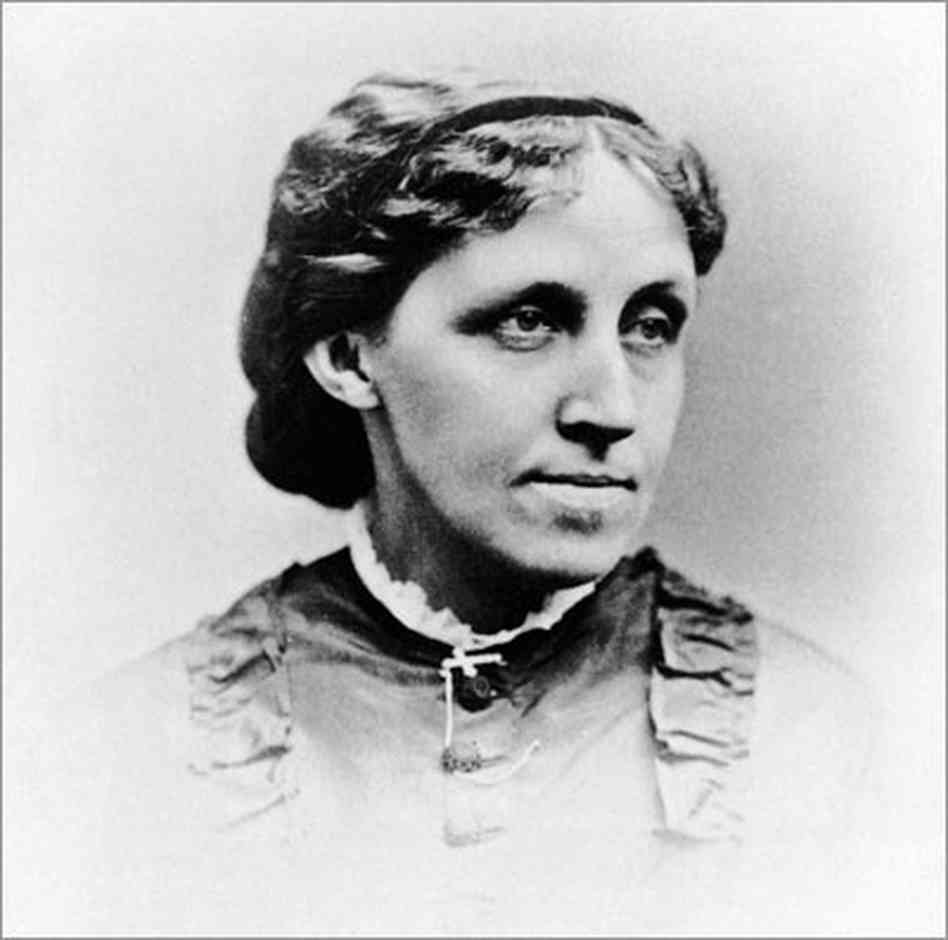
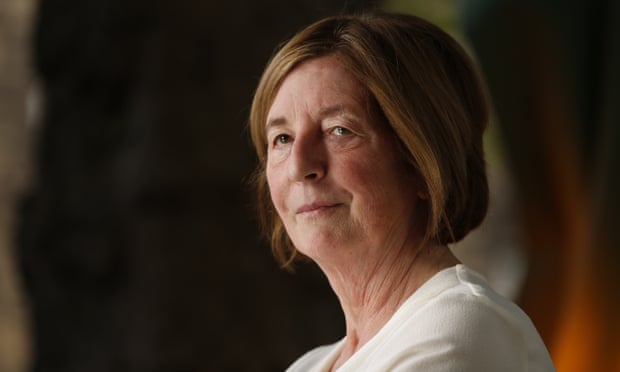



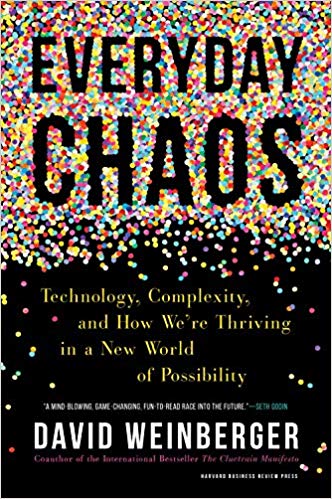

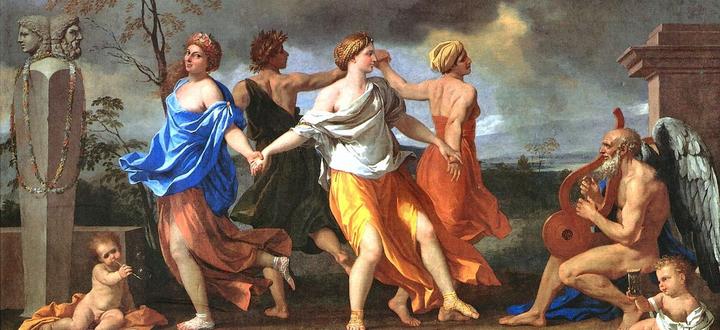

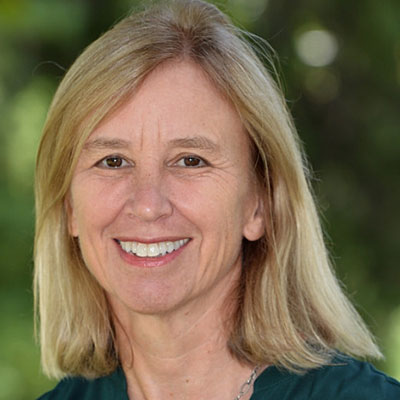
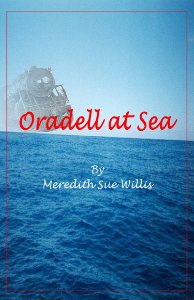
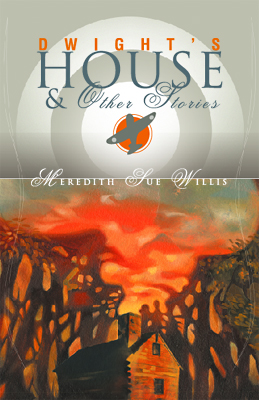
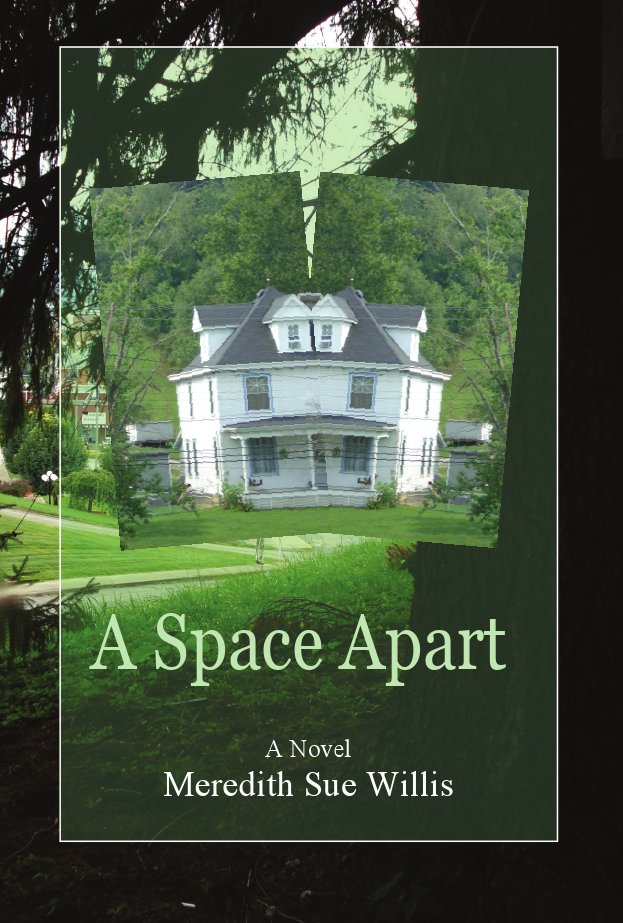
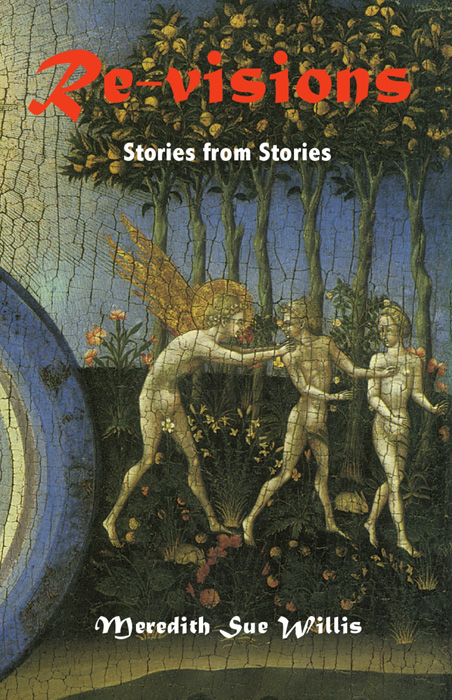



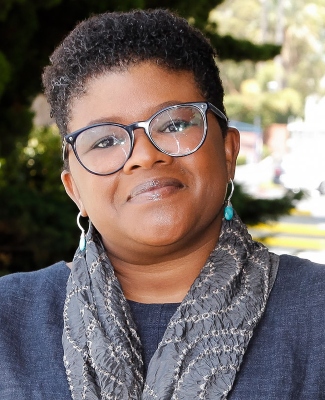
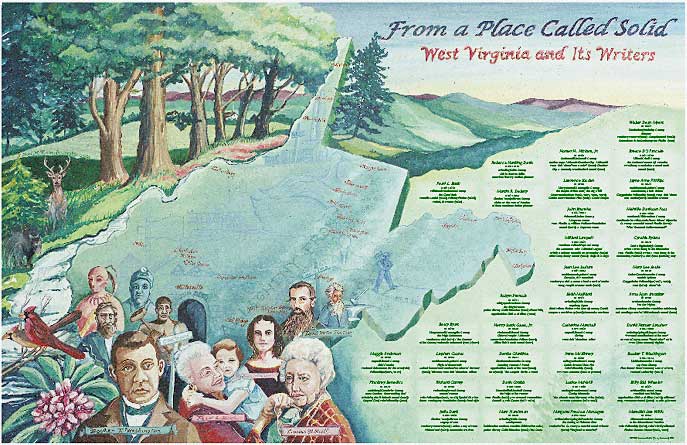

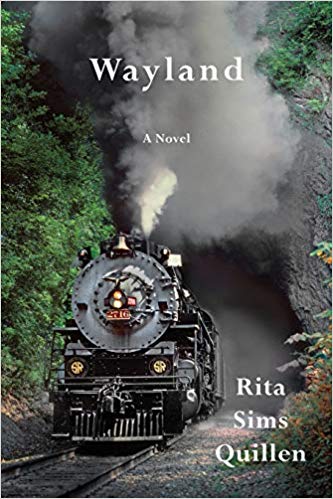
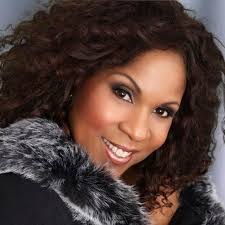
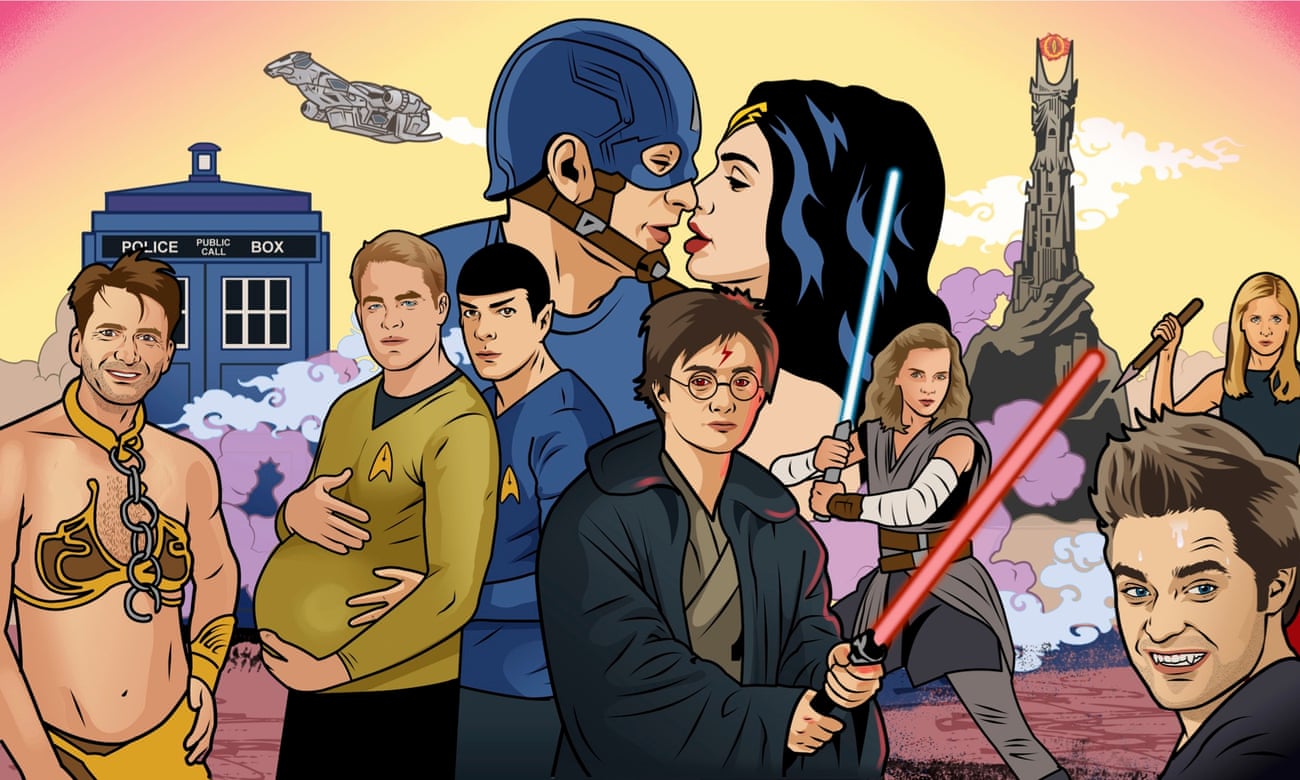

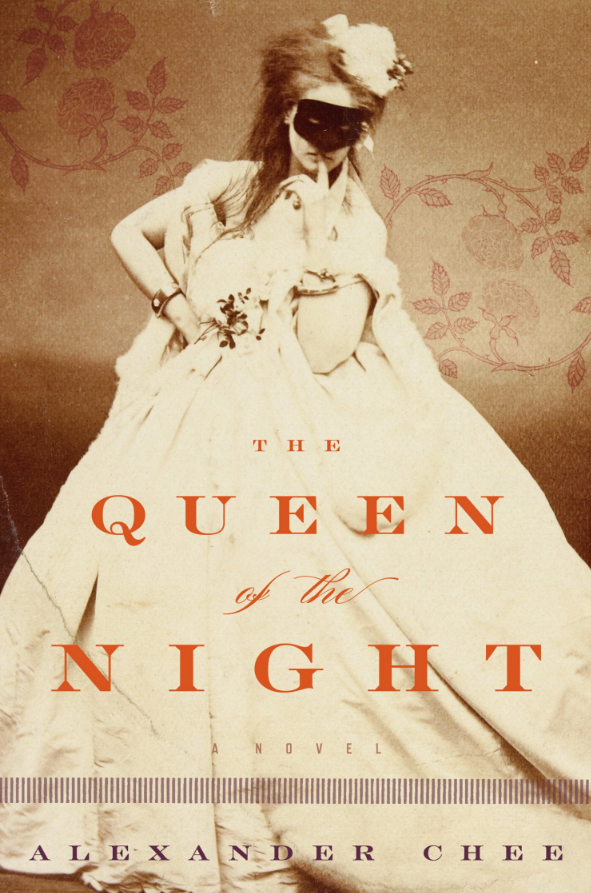
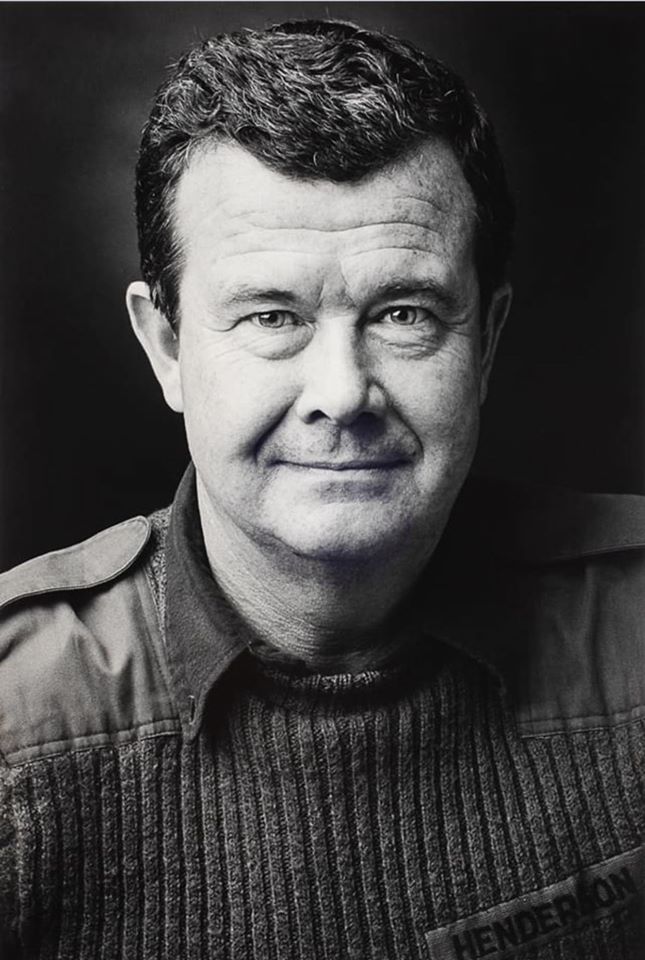
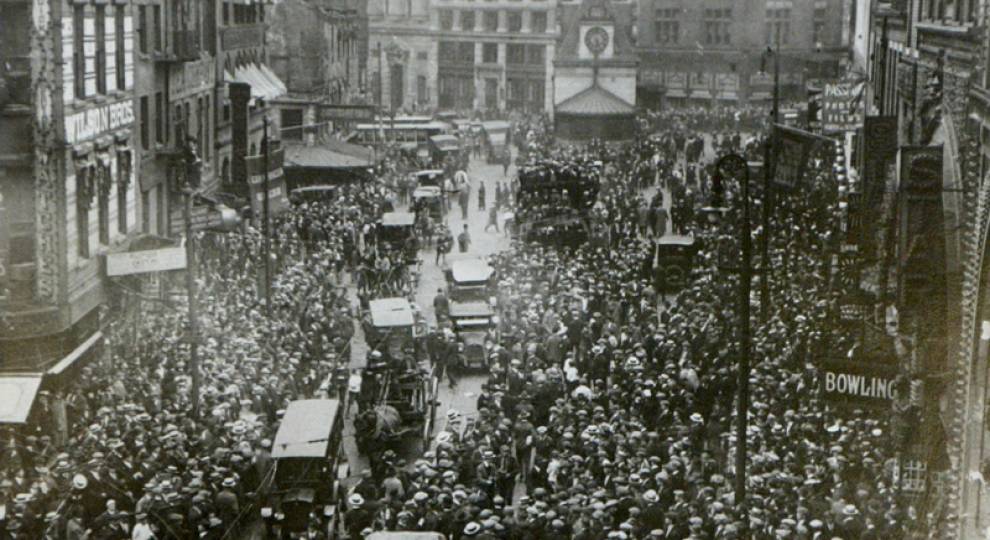
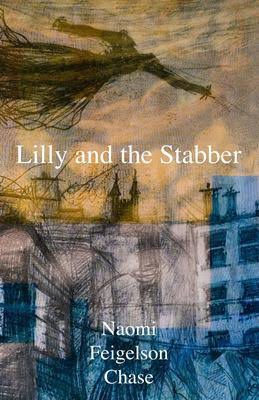
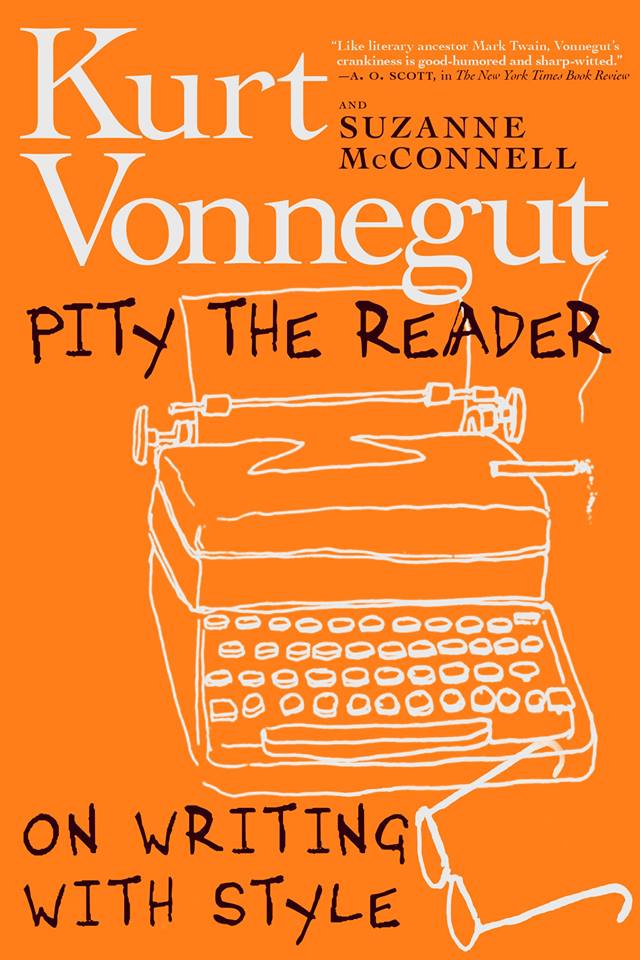
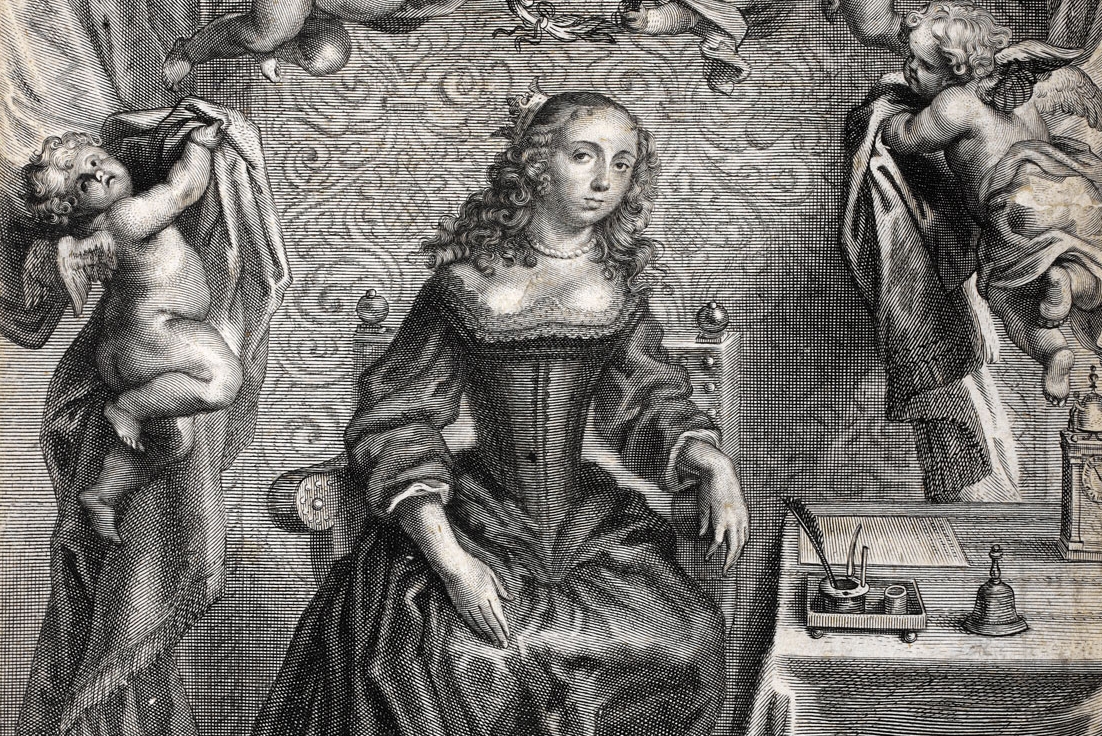
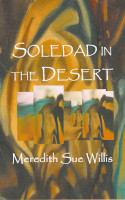

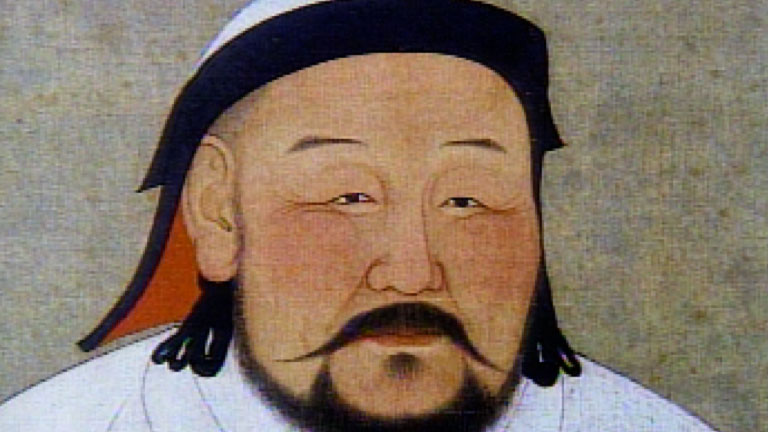
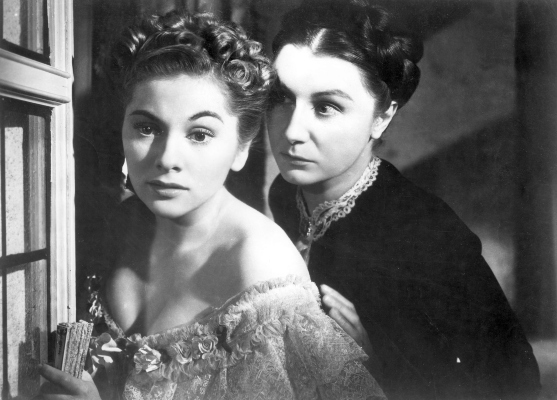
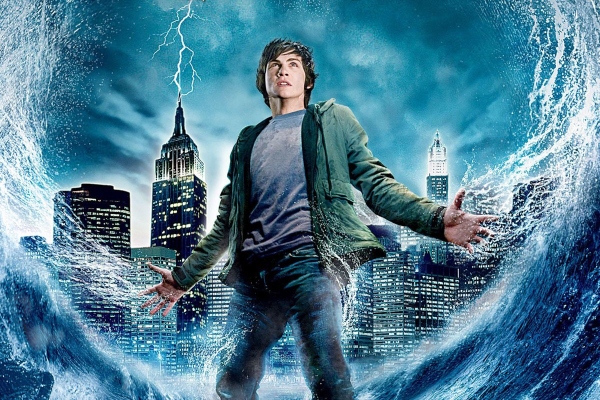
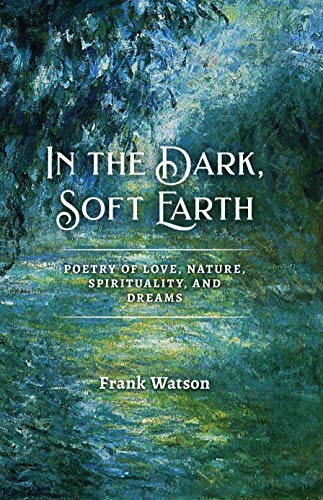
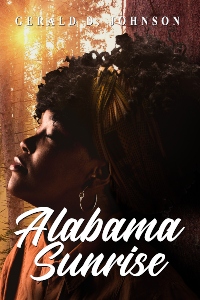
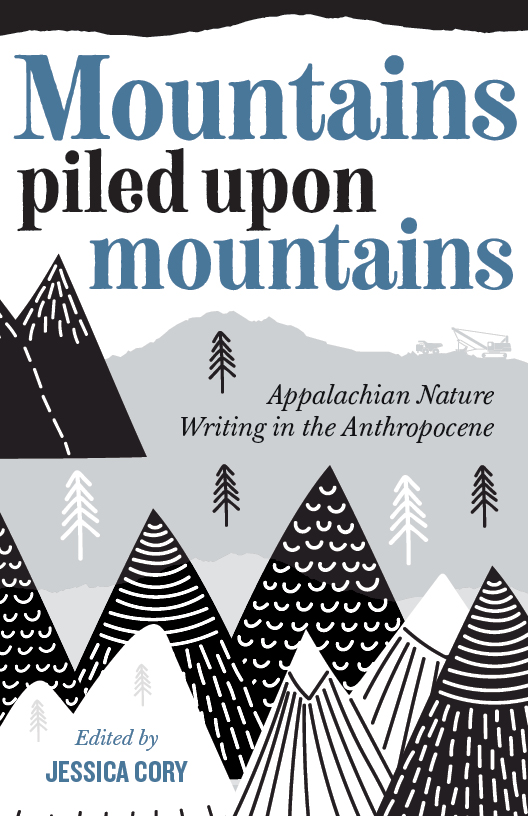
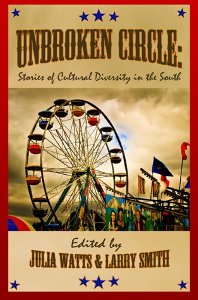
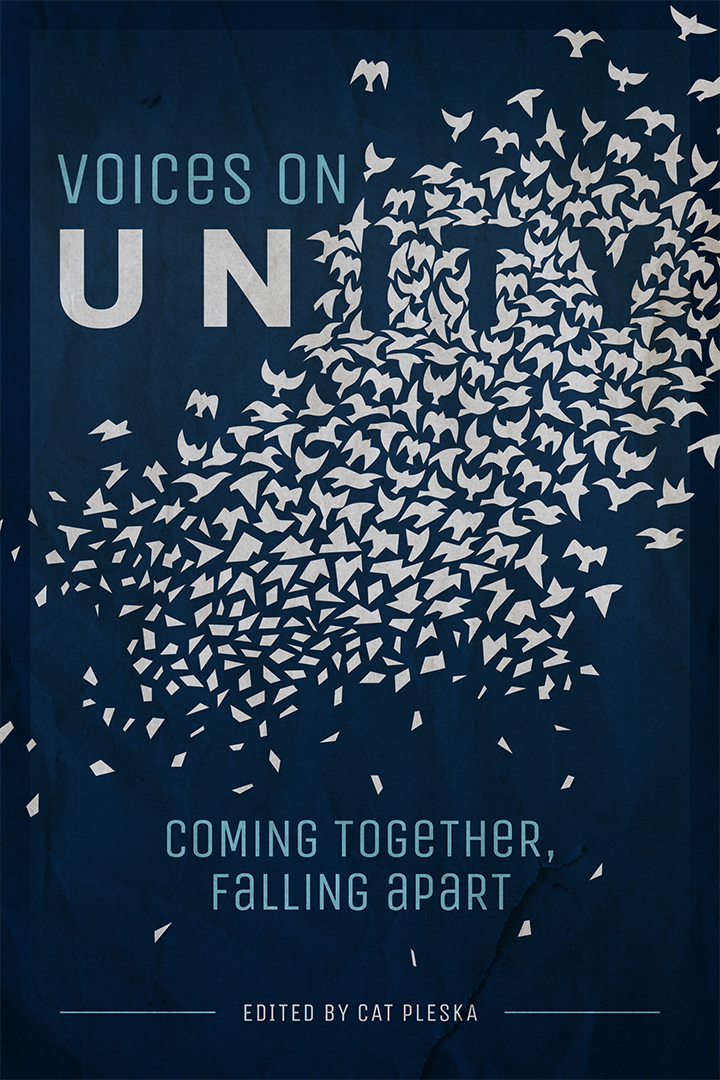
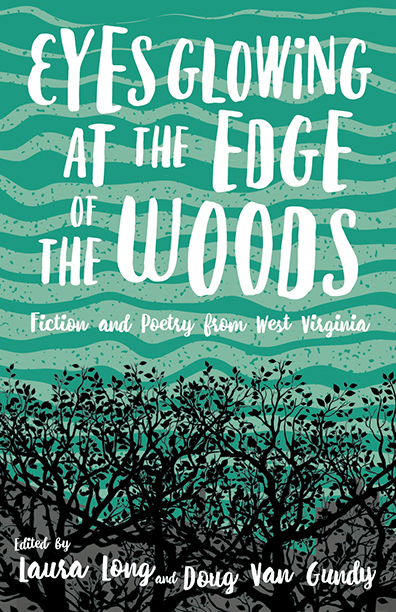
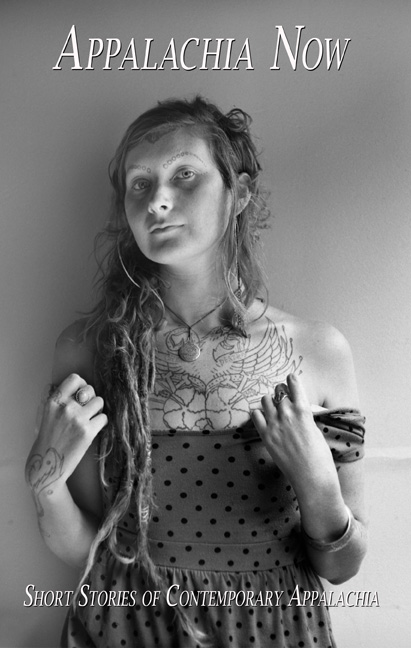
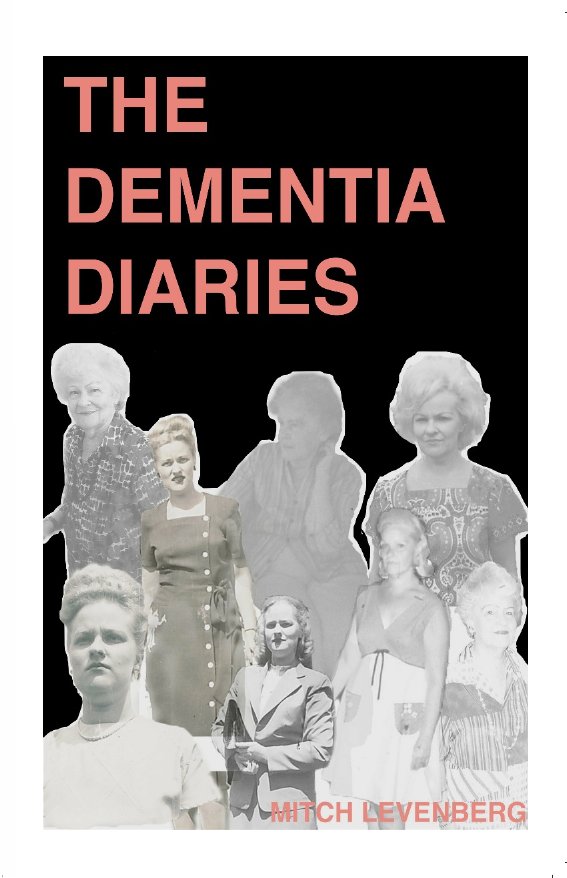
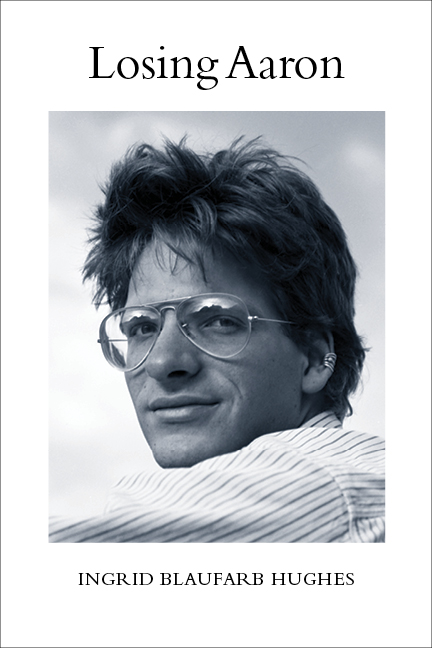

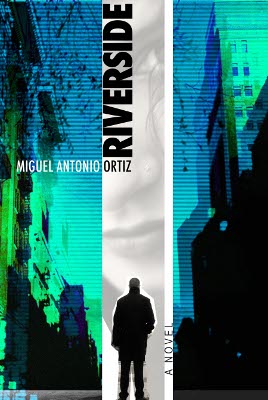
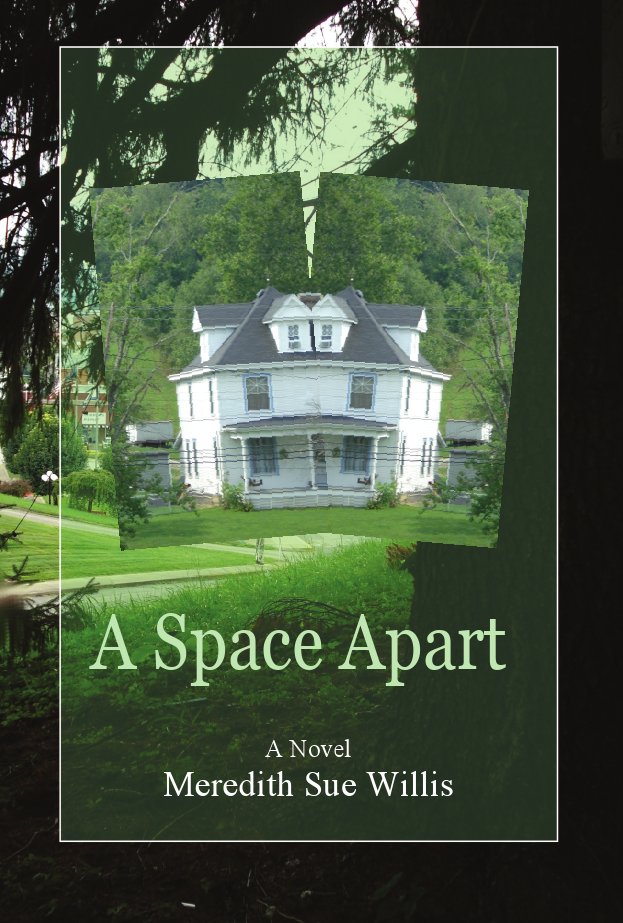
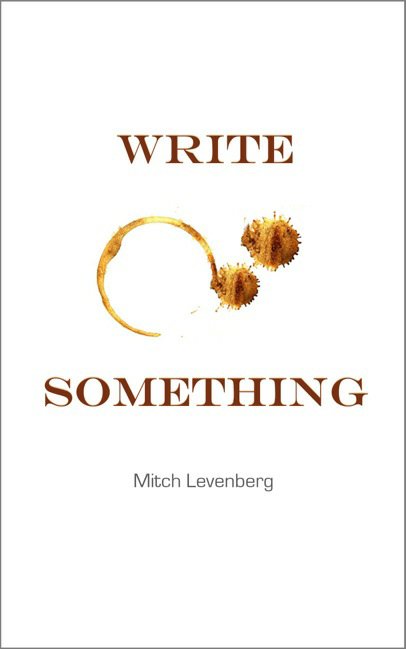
.jpg)
